
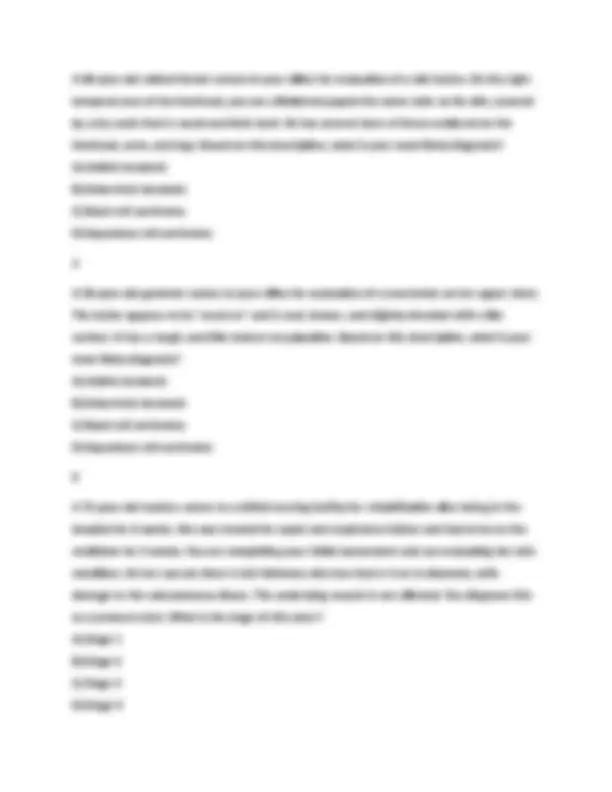
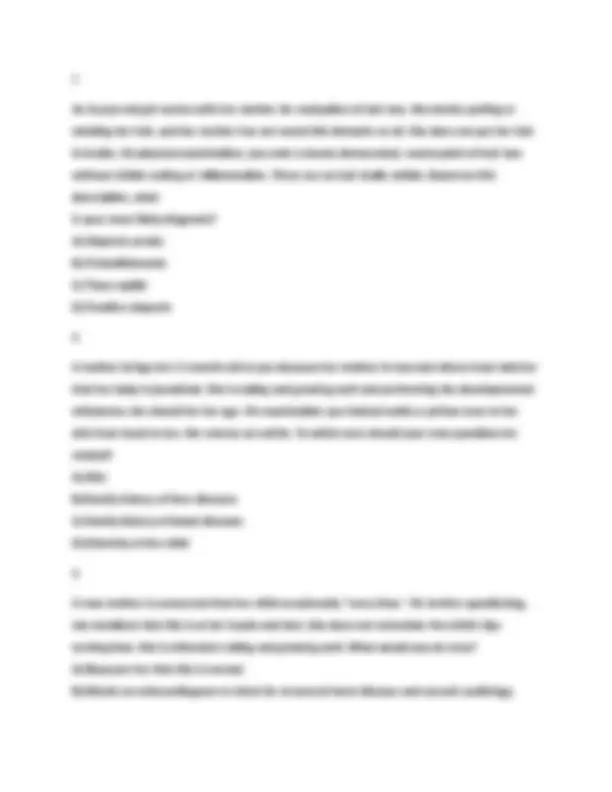
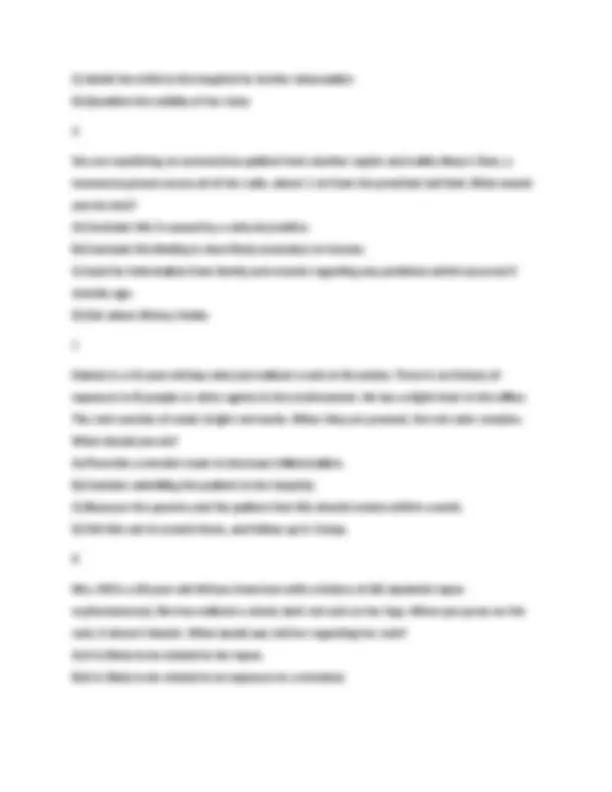

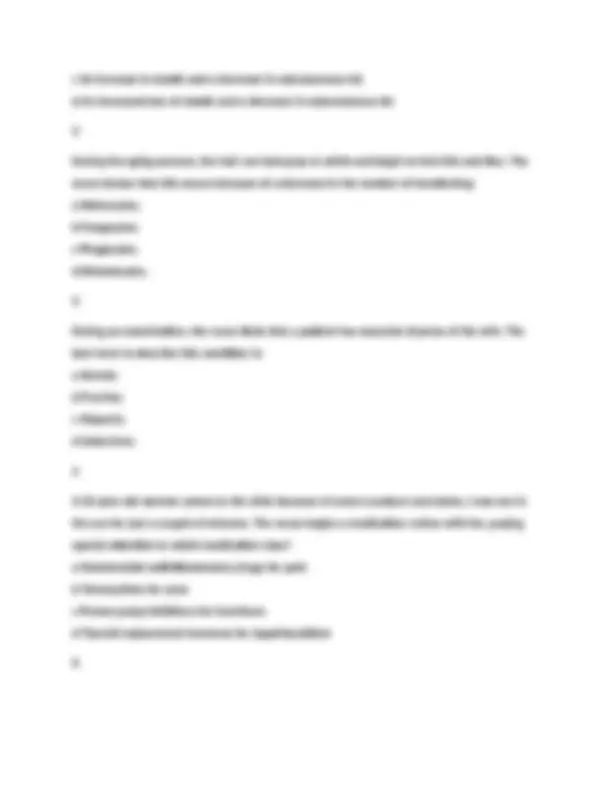
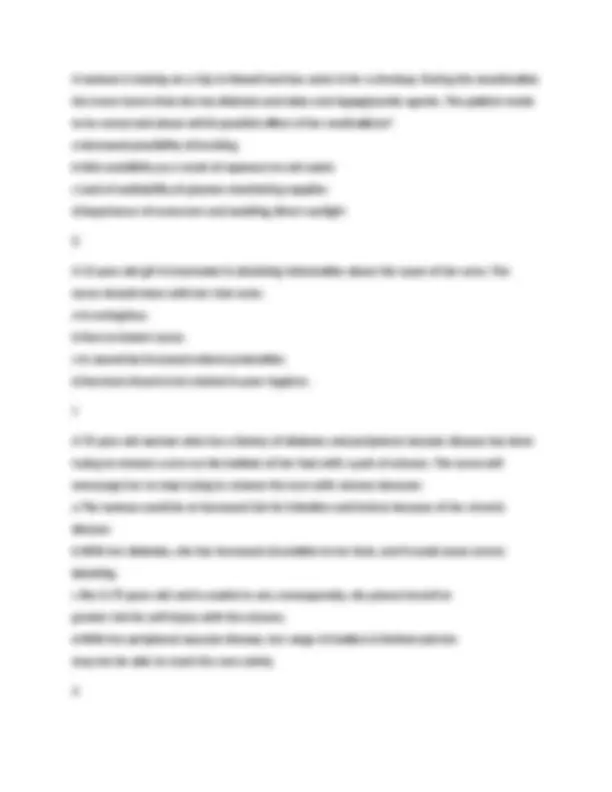
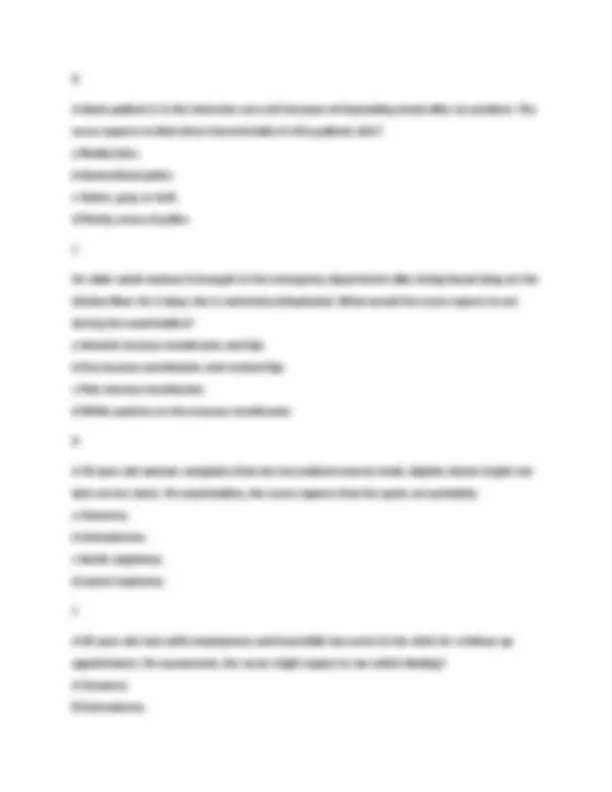
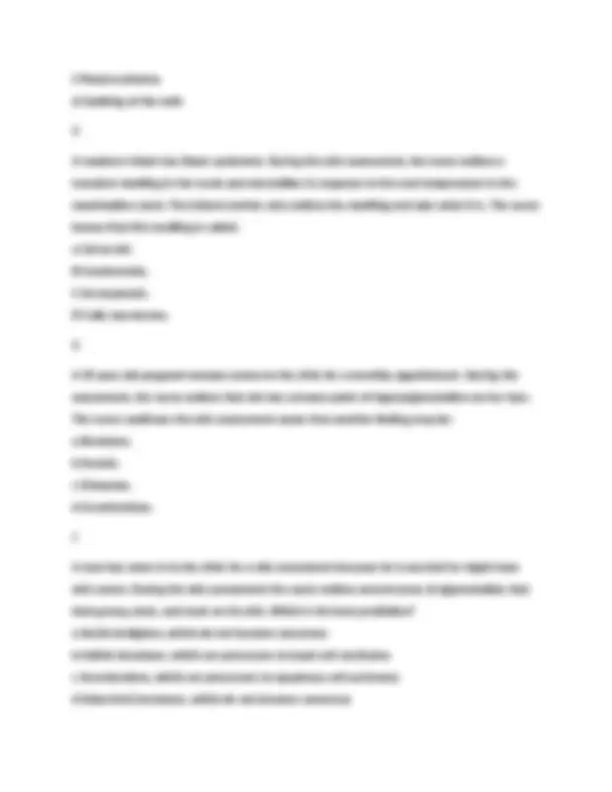
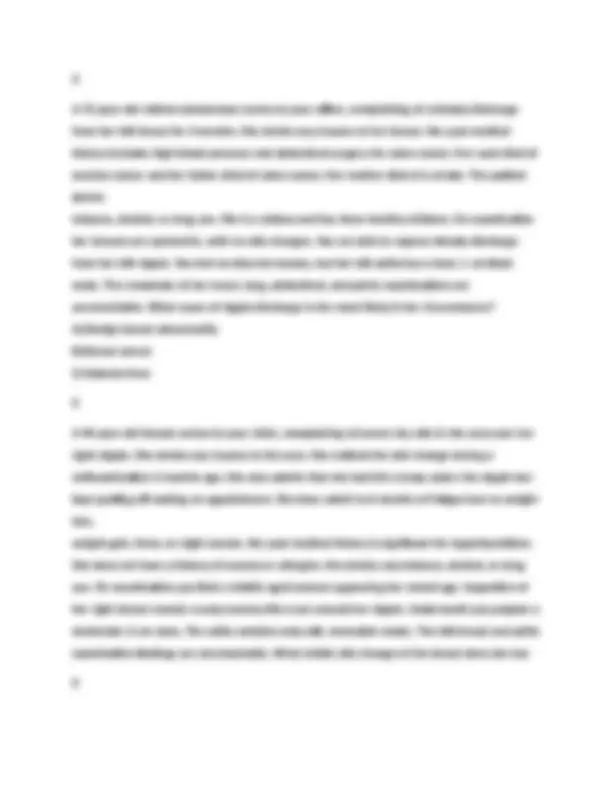
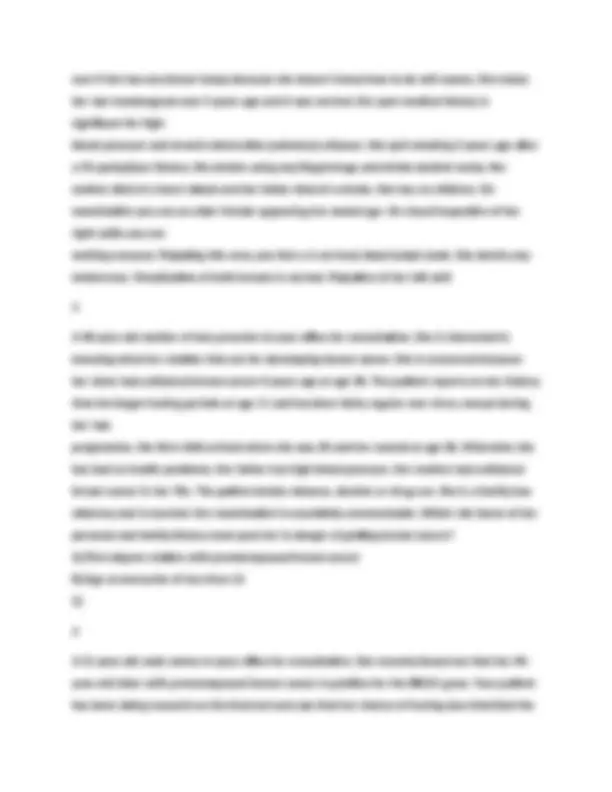
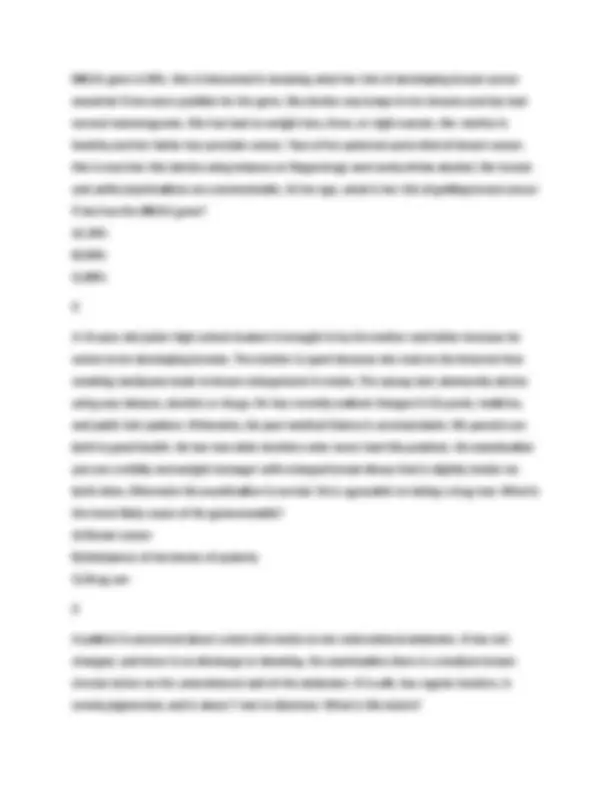
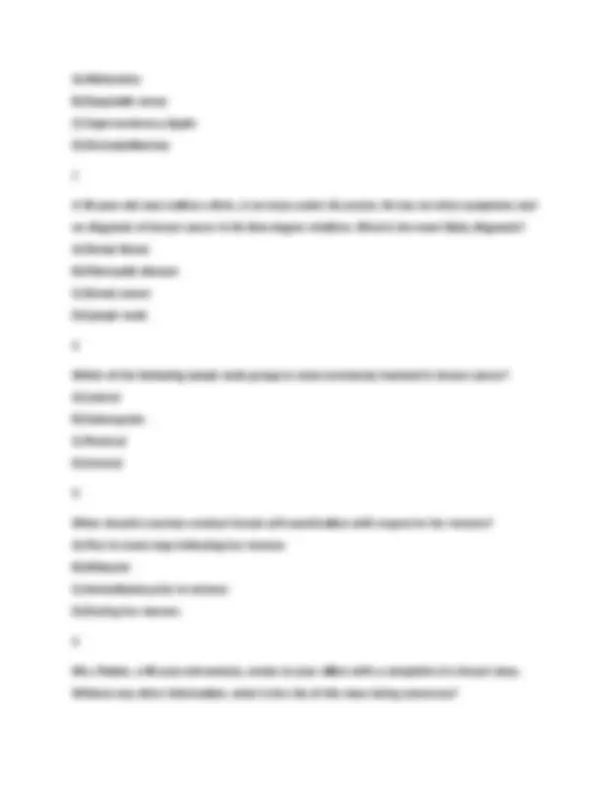
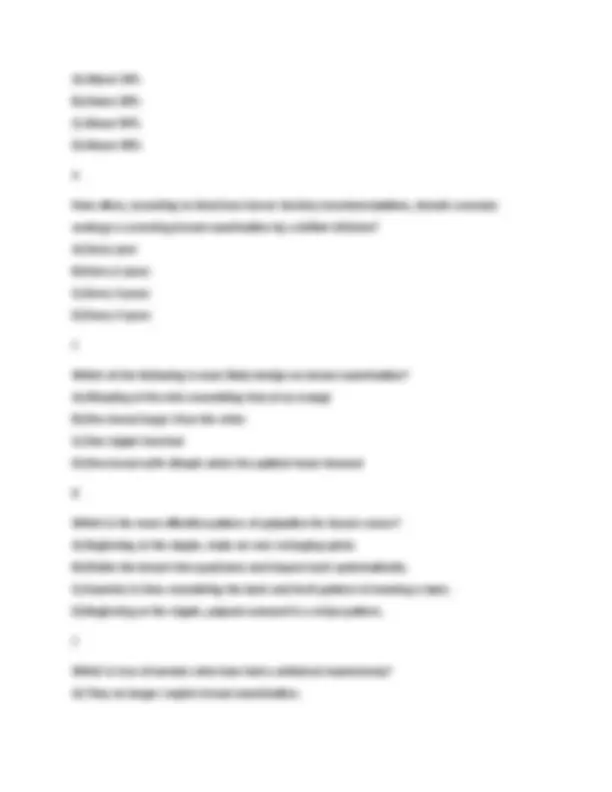
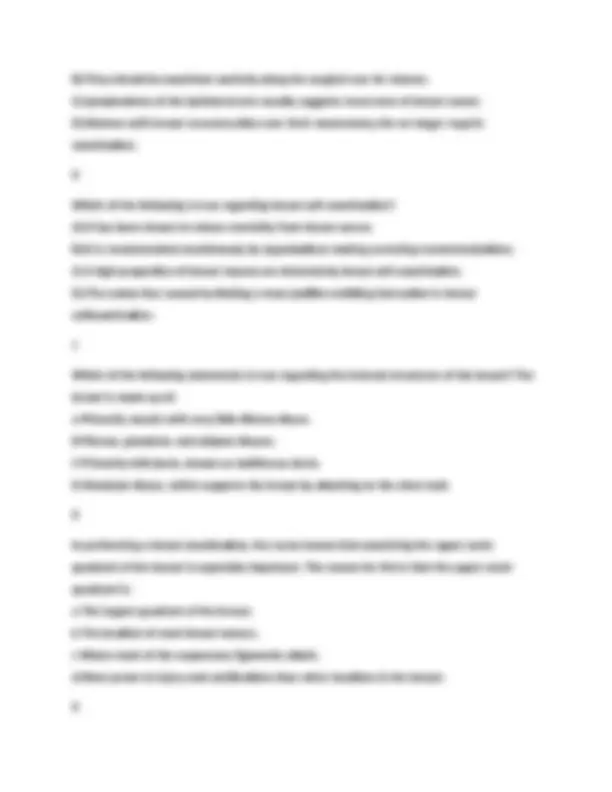
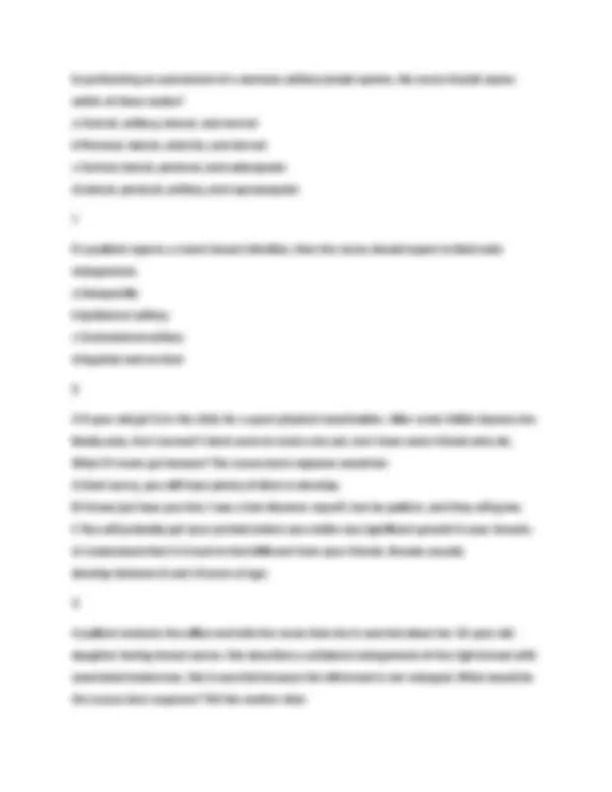
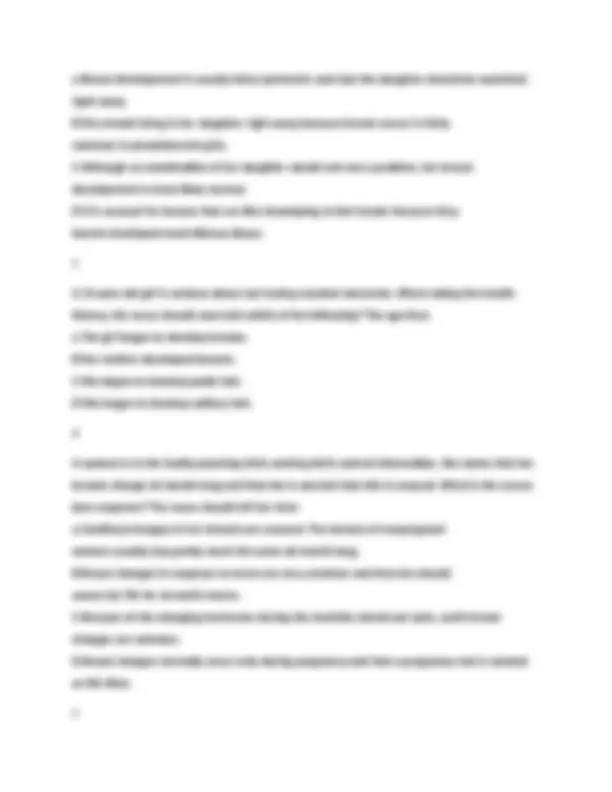
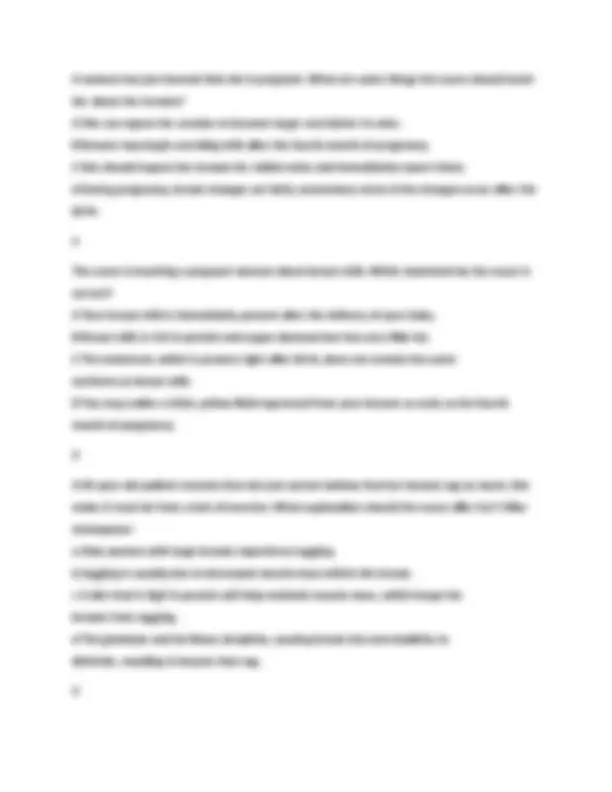
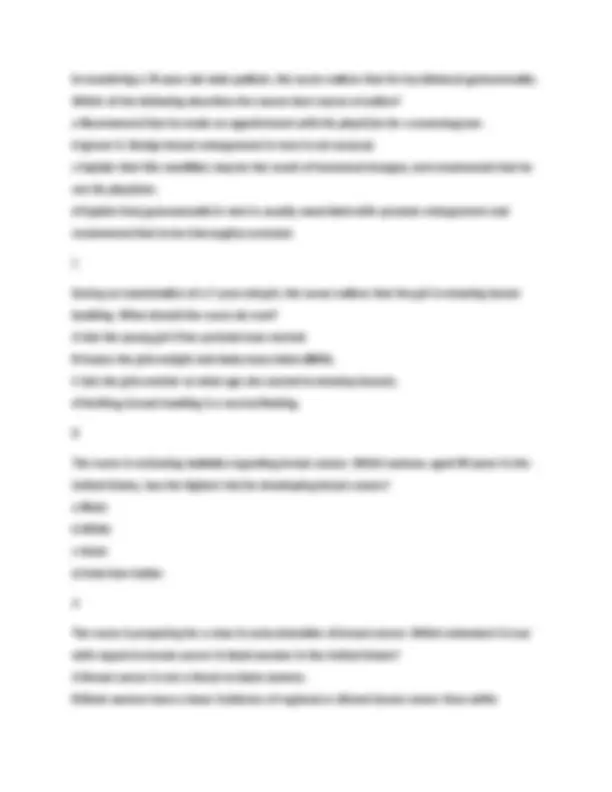
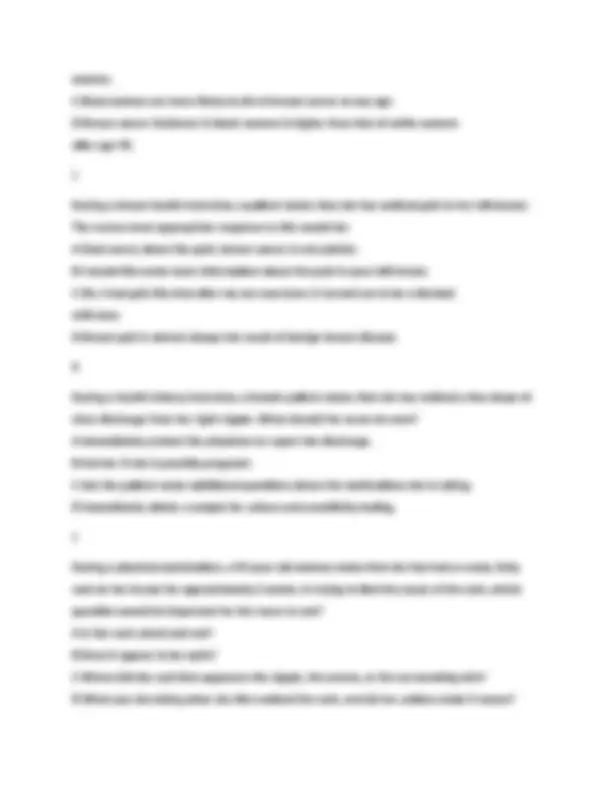
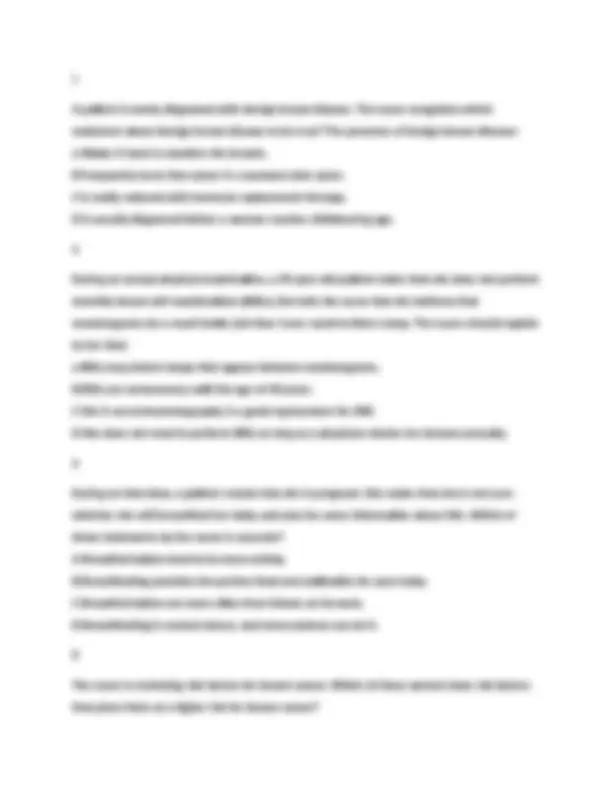
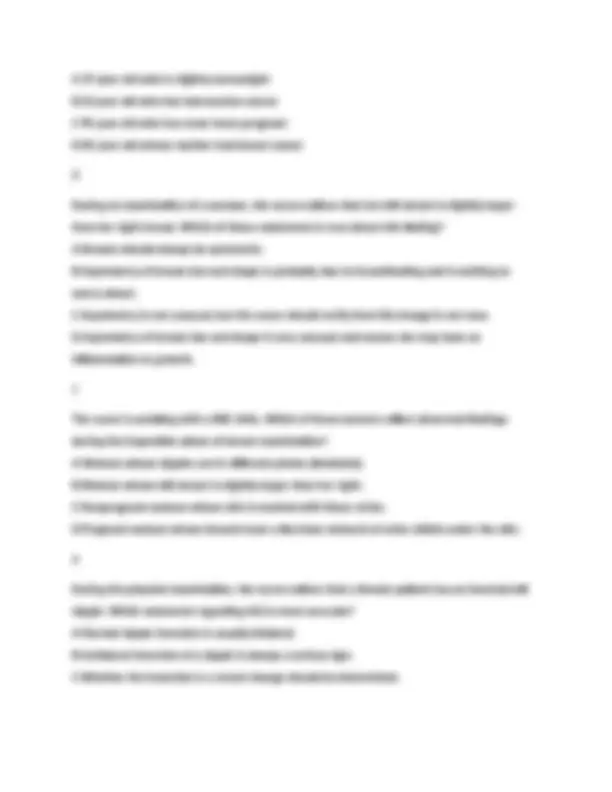
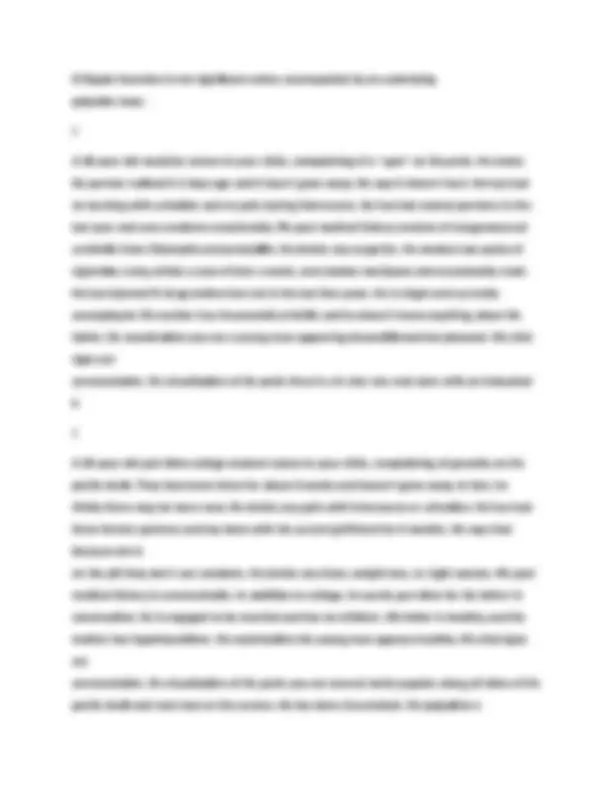
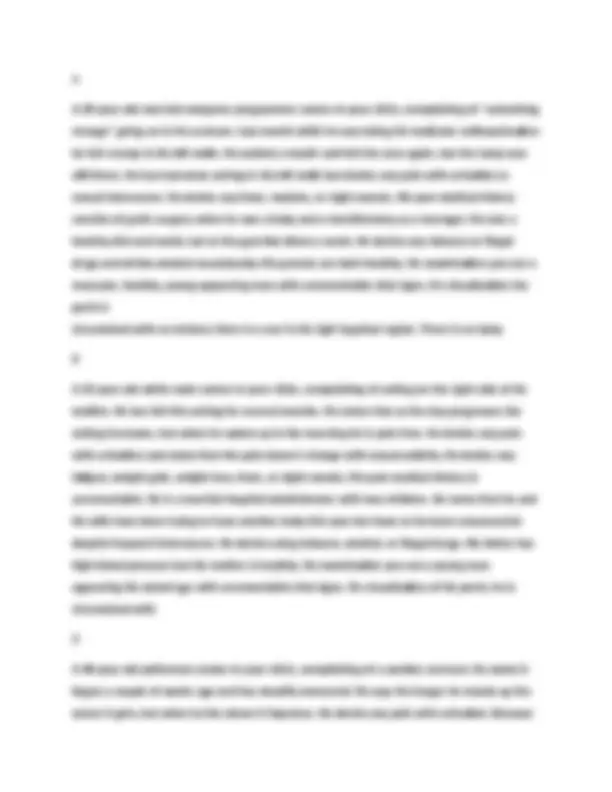
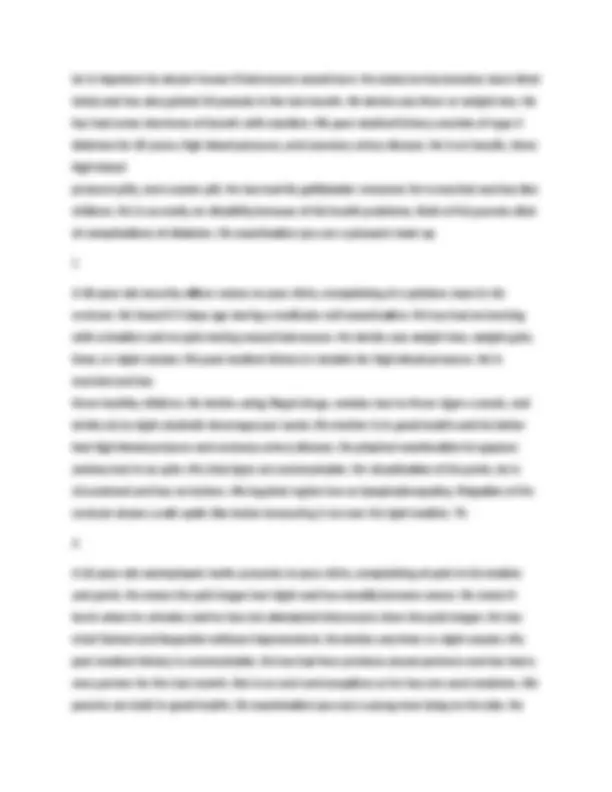
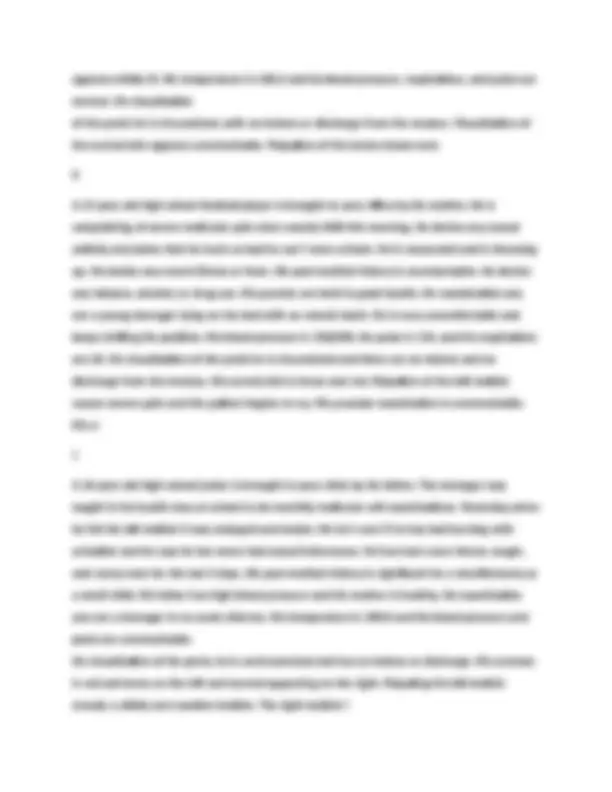
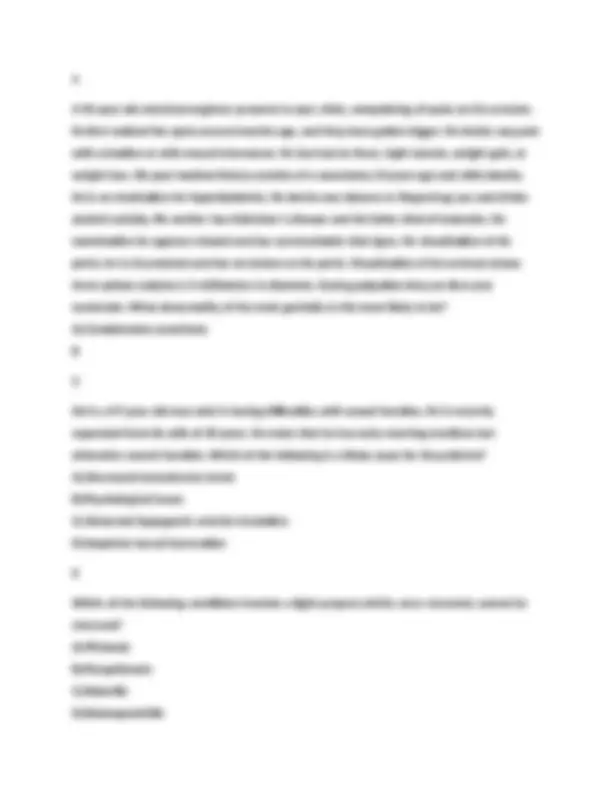
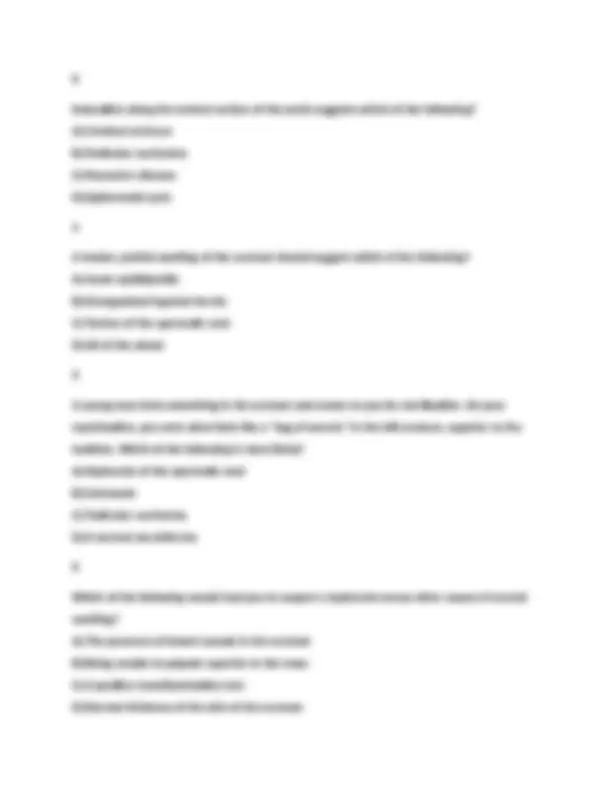
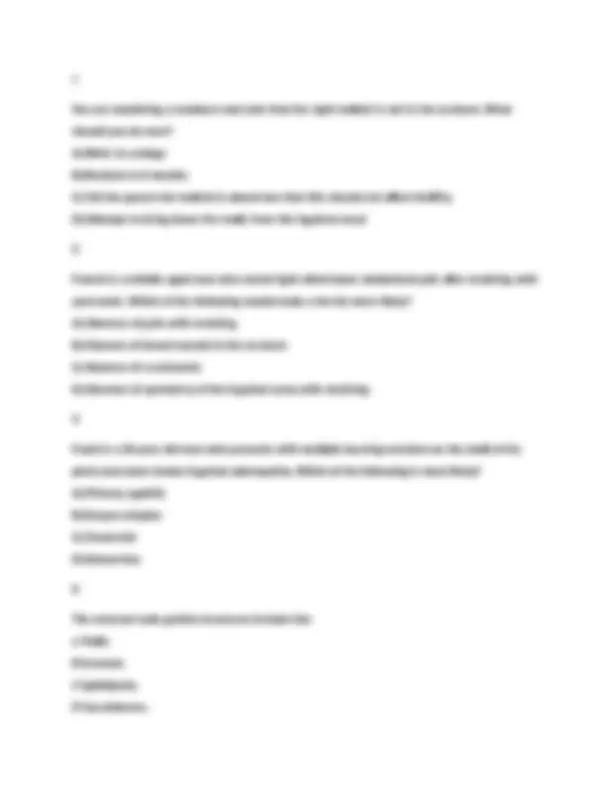

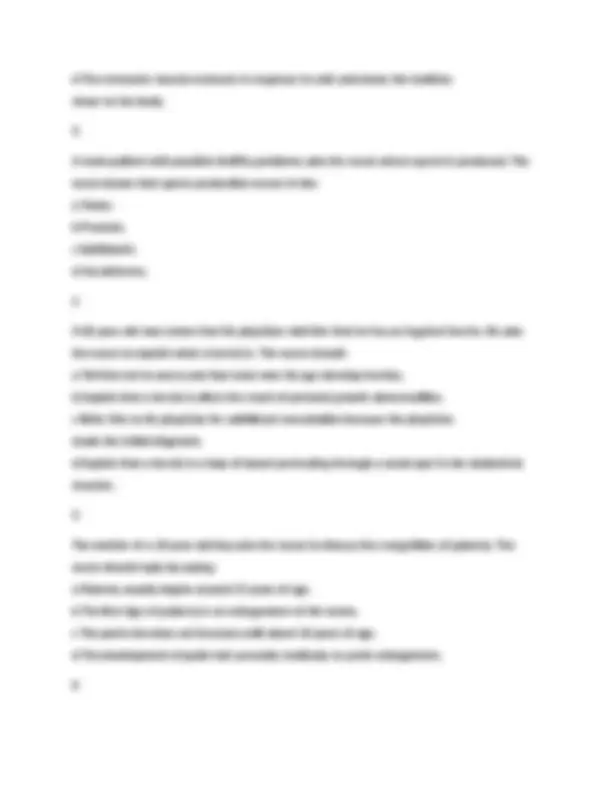
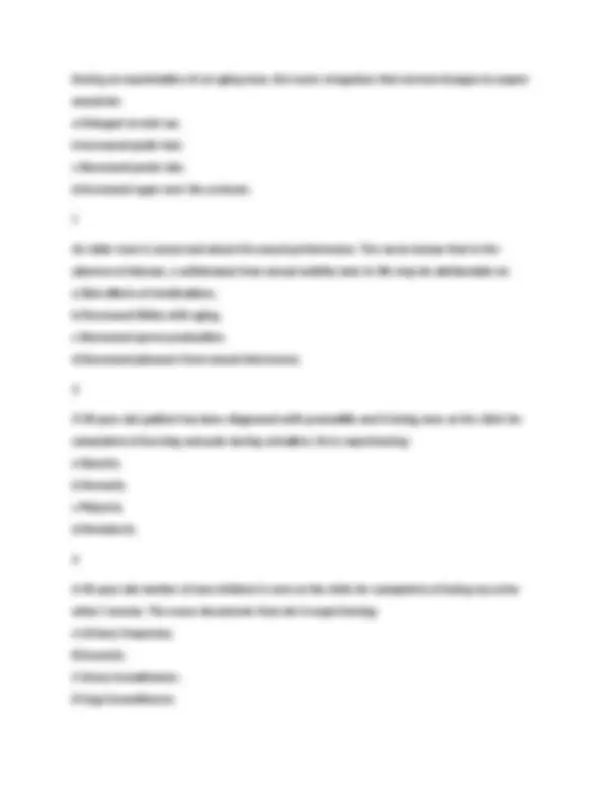
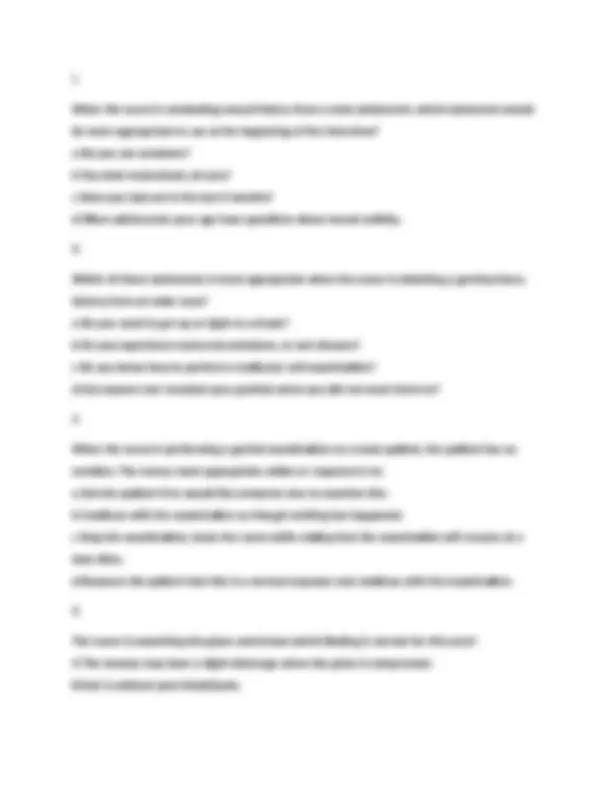
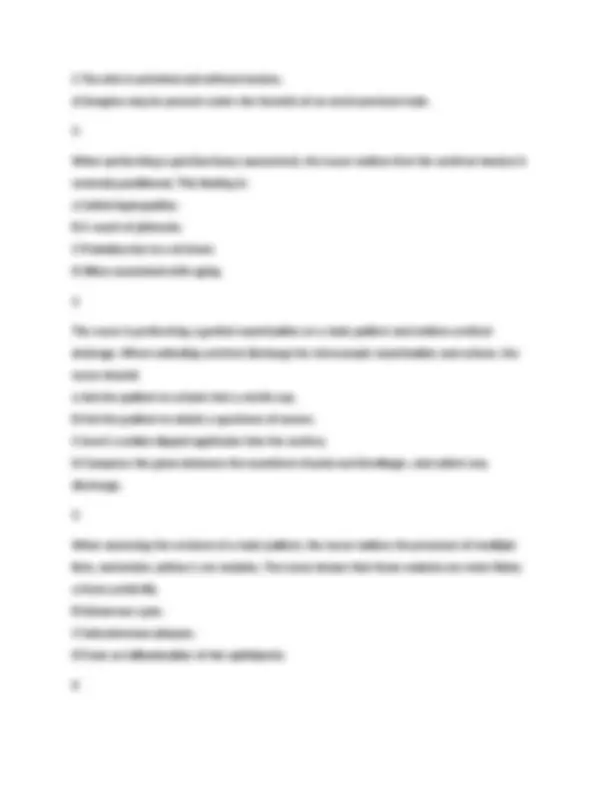
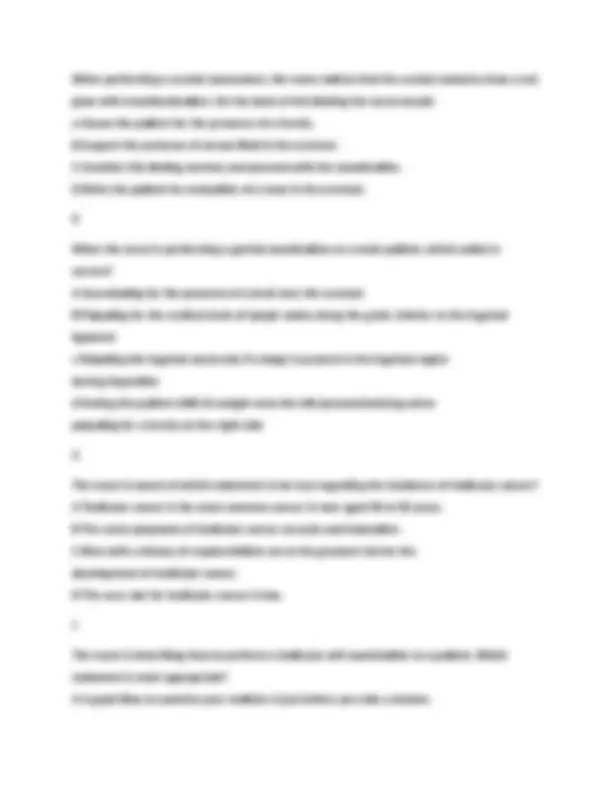
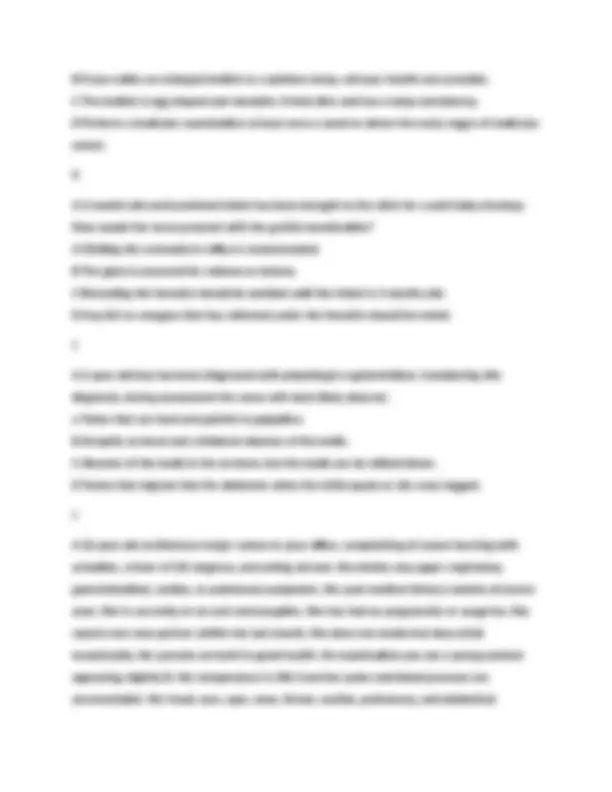
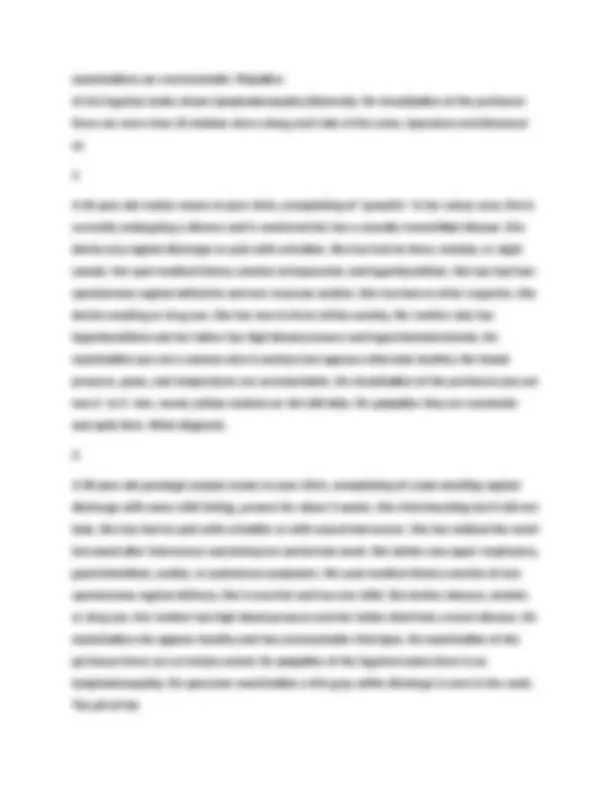
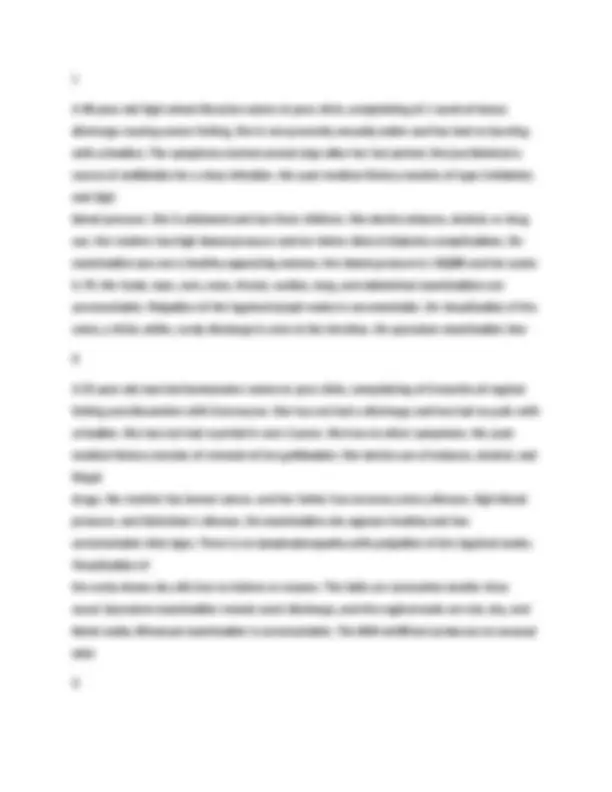
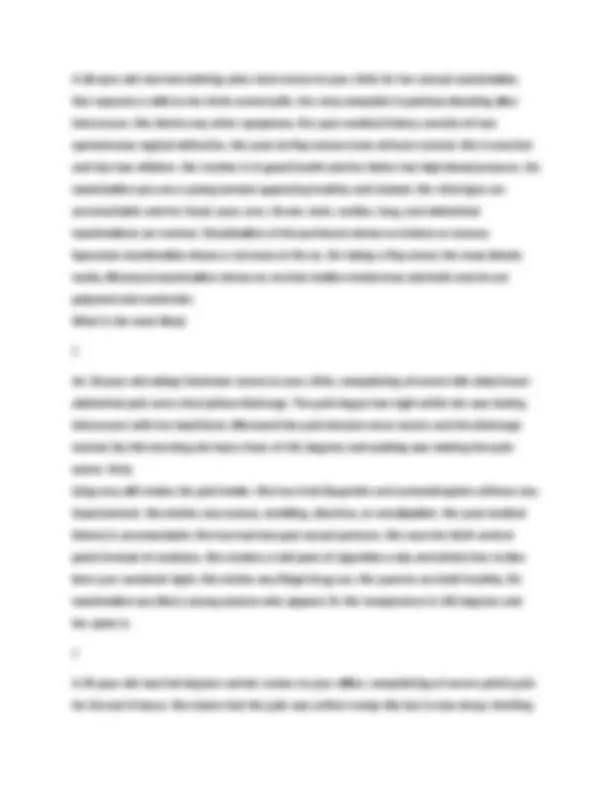
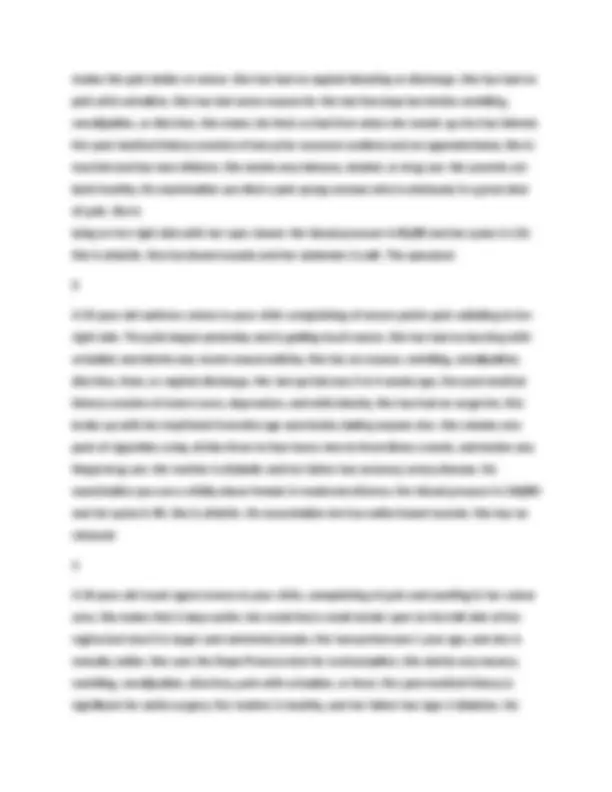
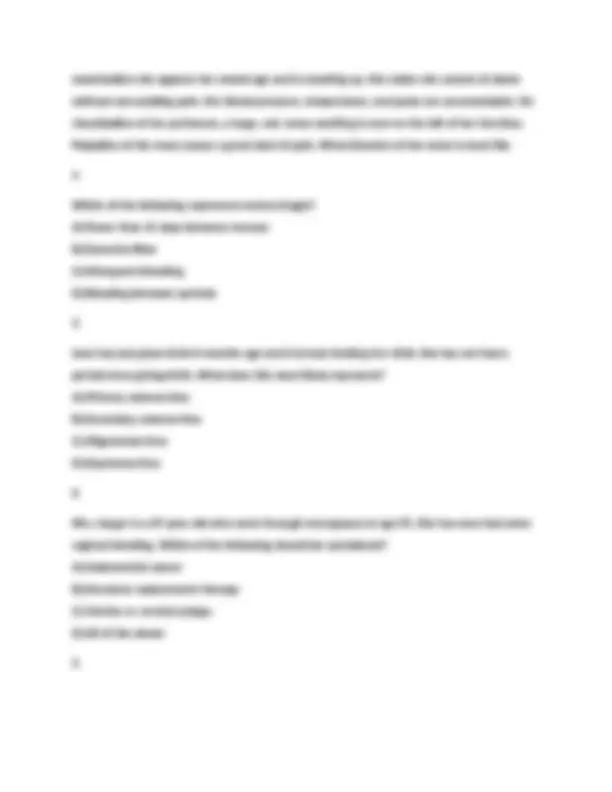
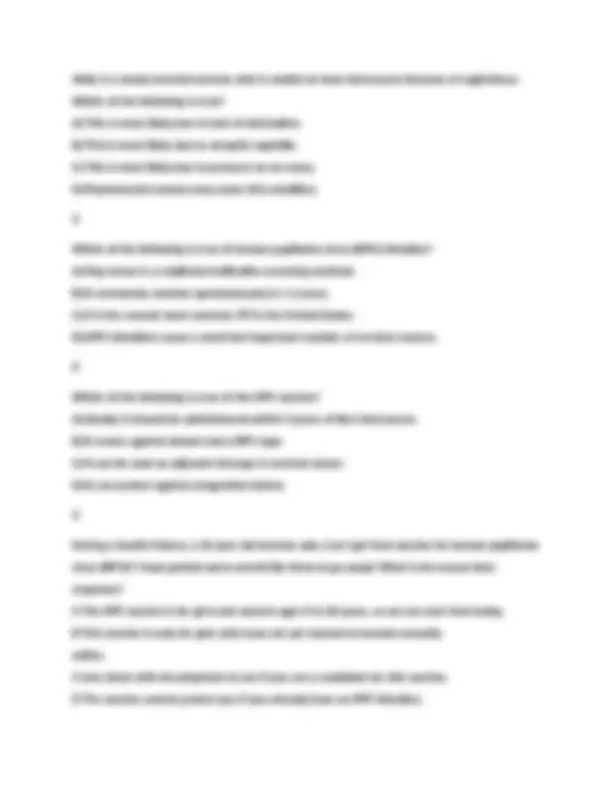
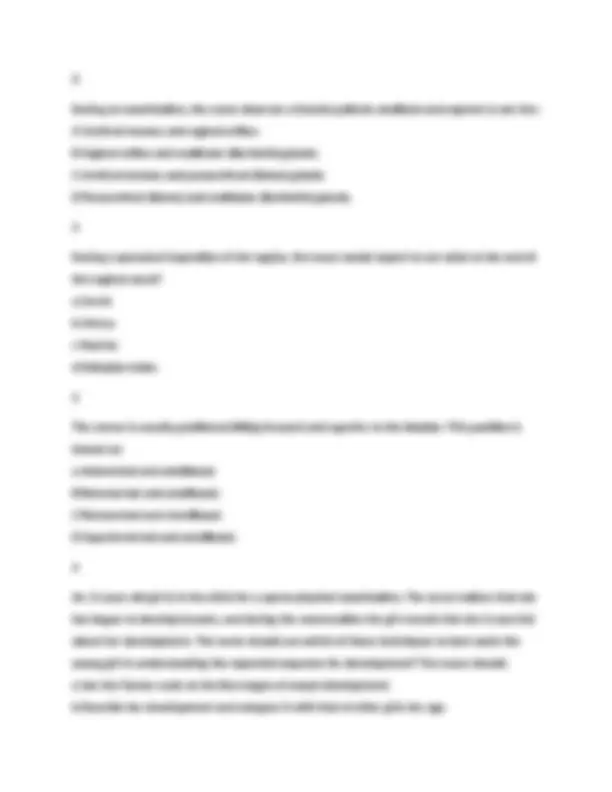
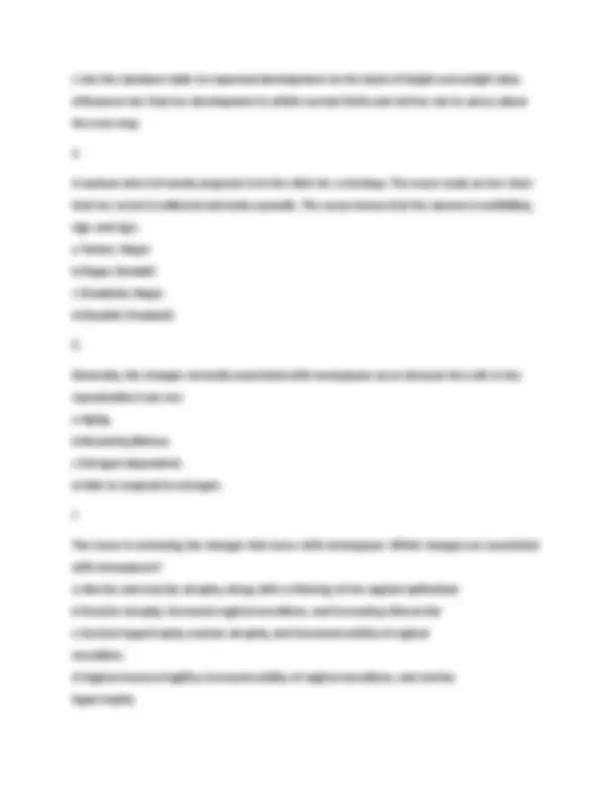
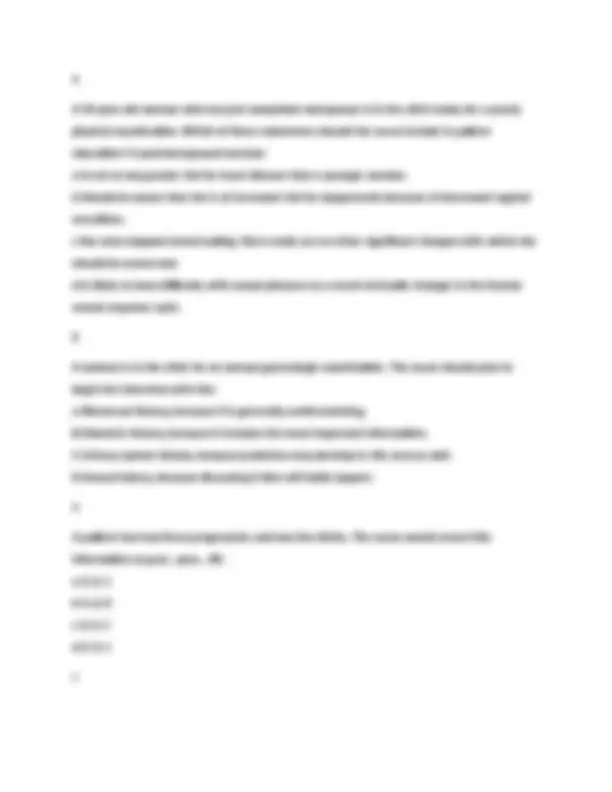
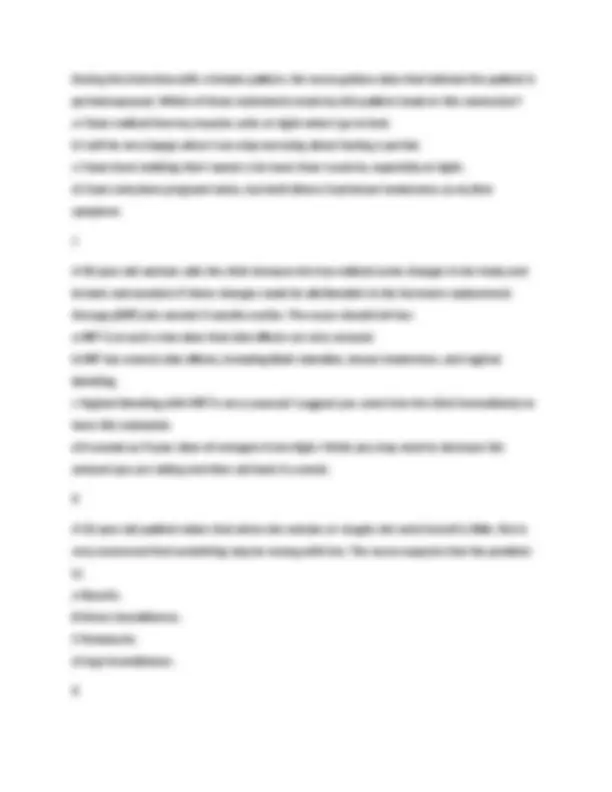
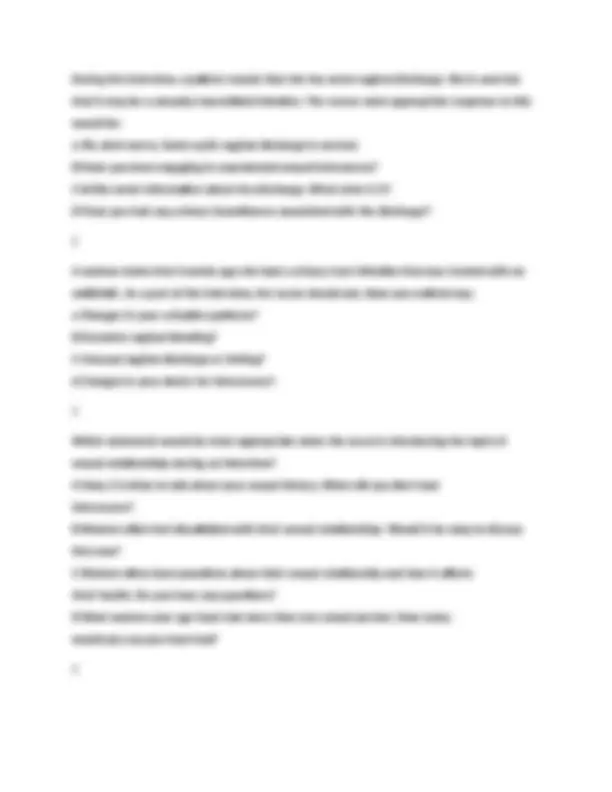
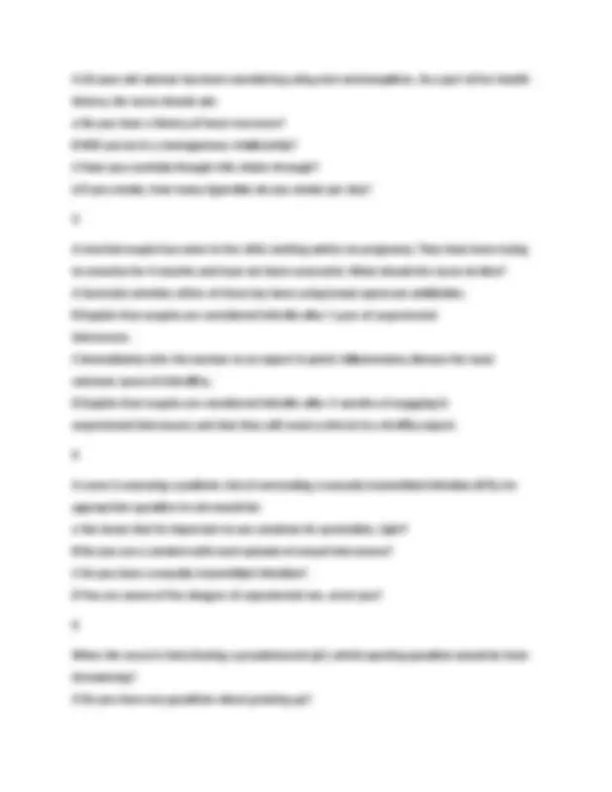
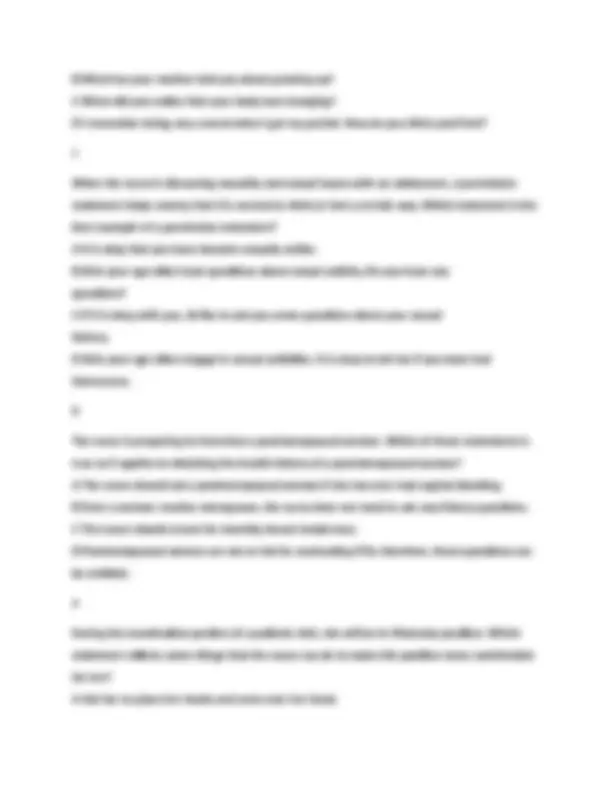
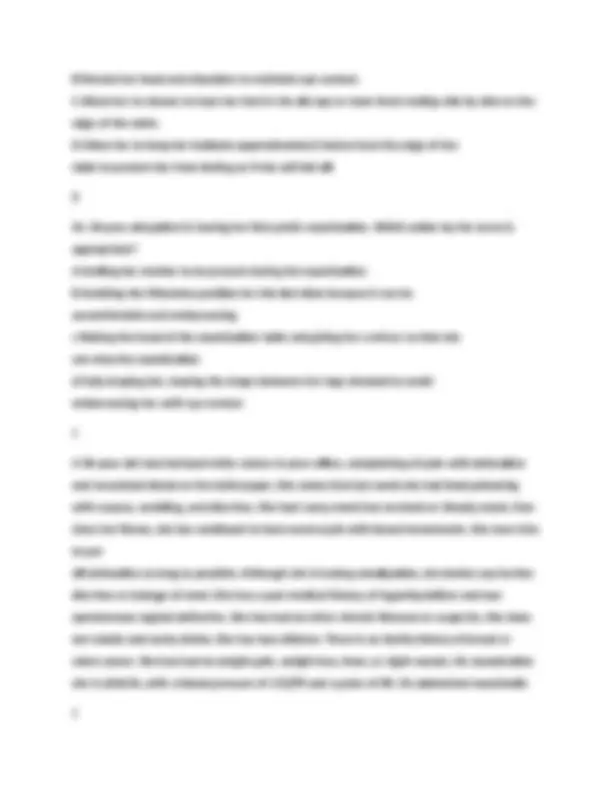
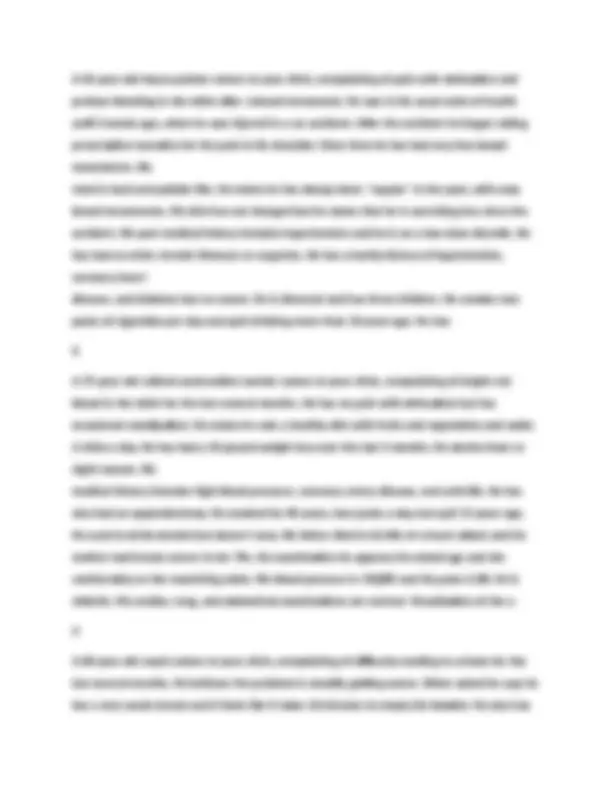
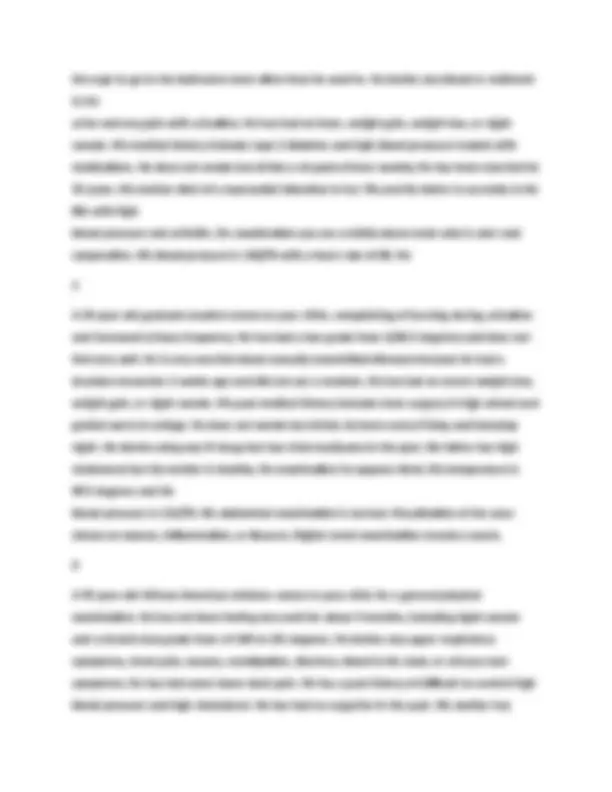
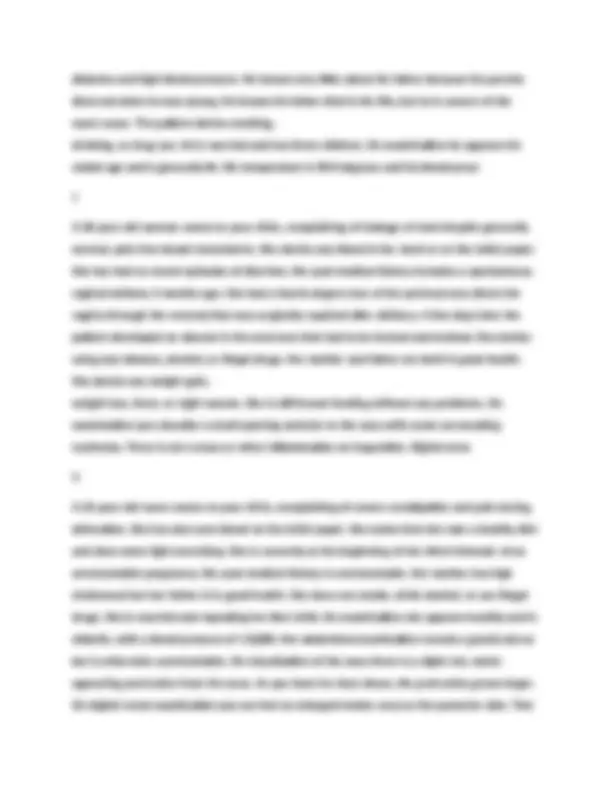
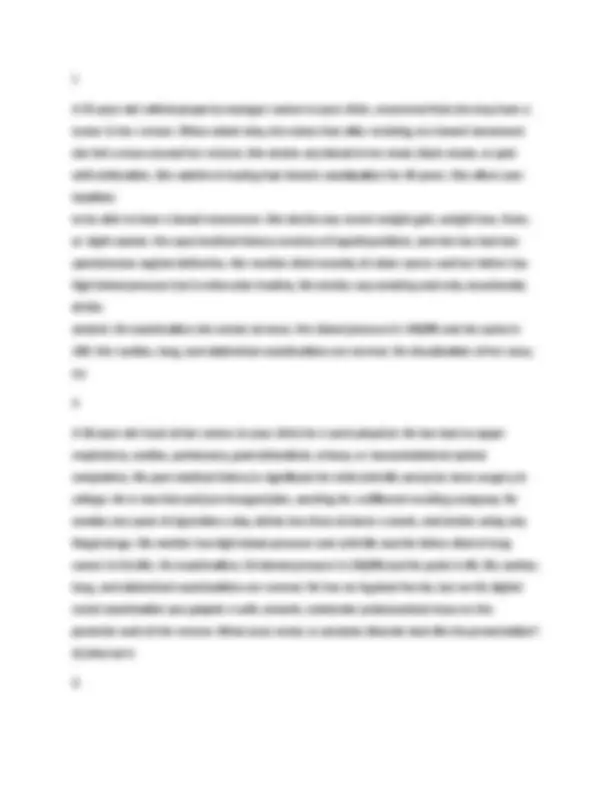
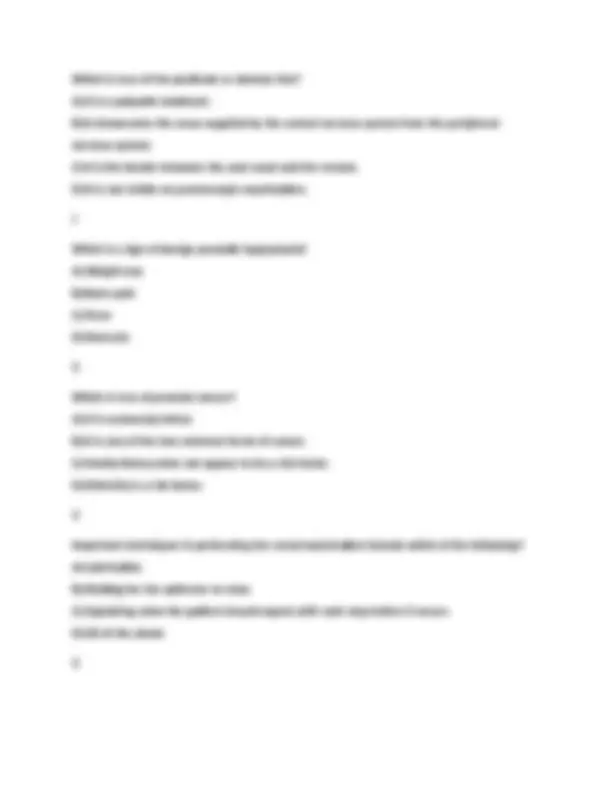
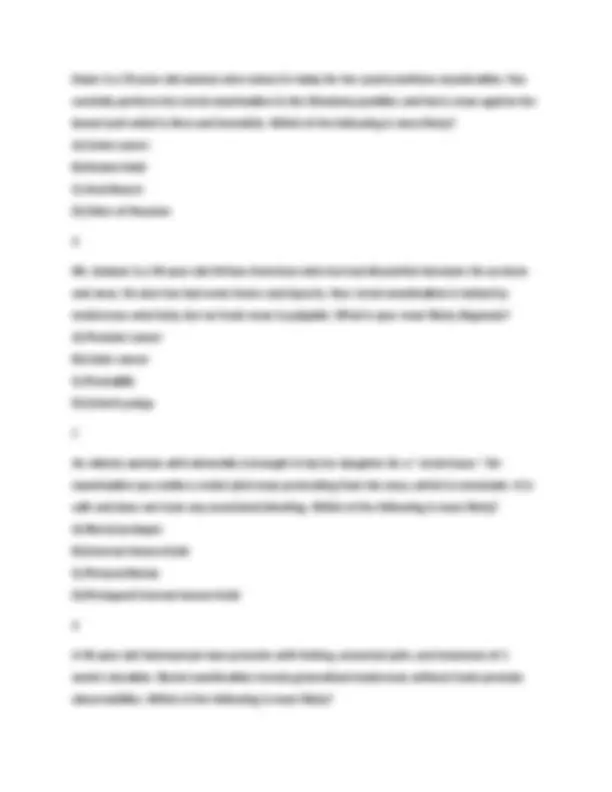
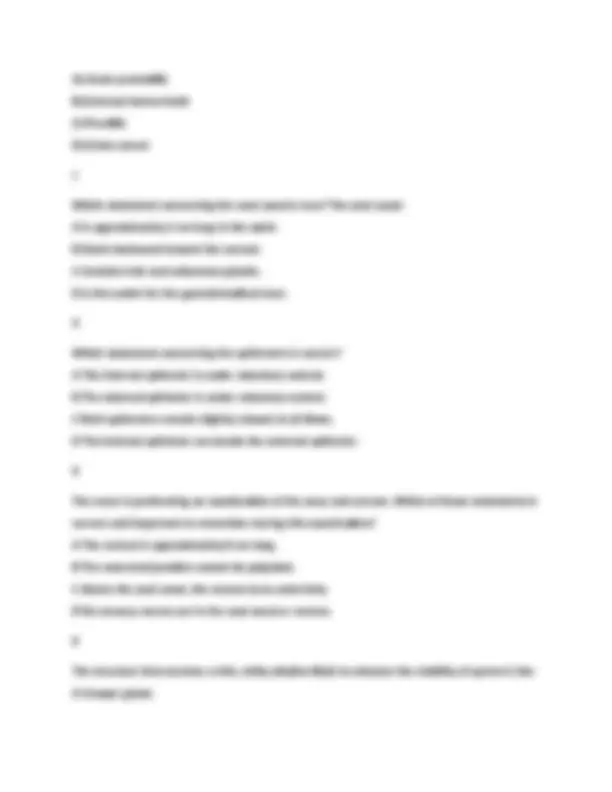
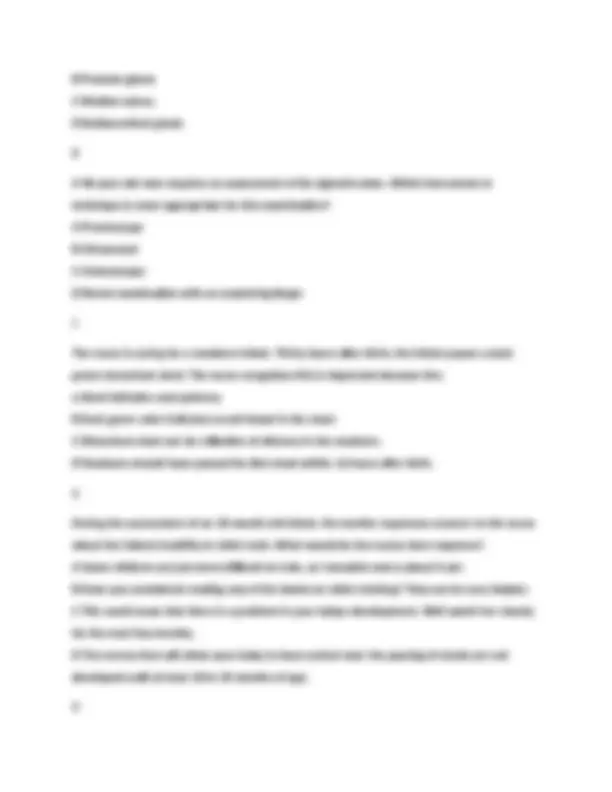
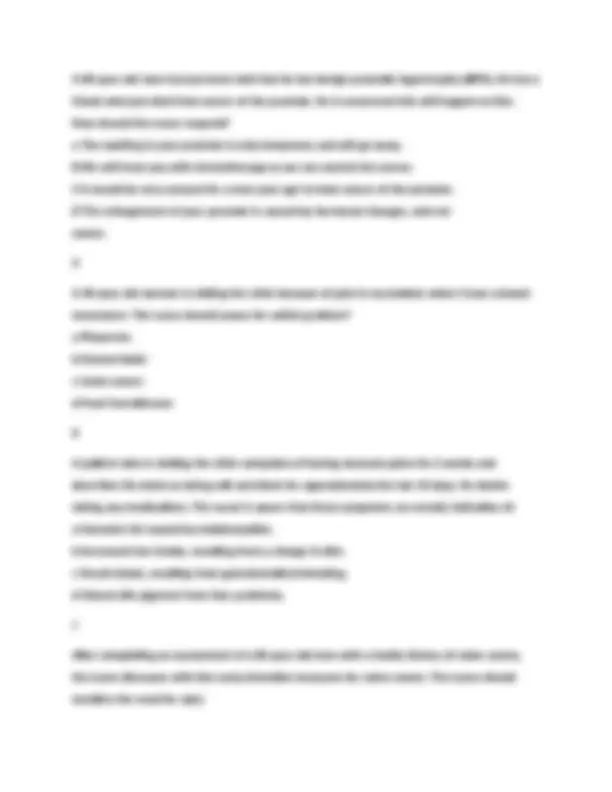
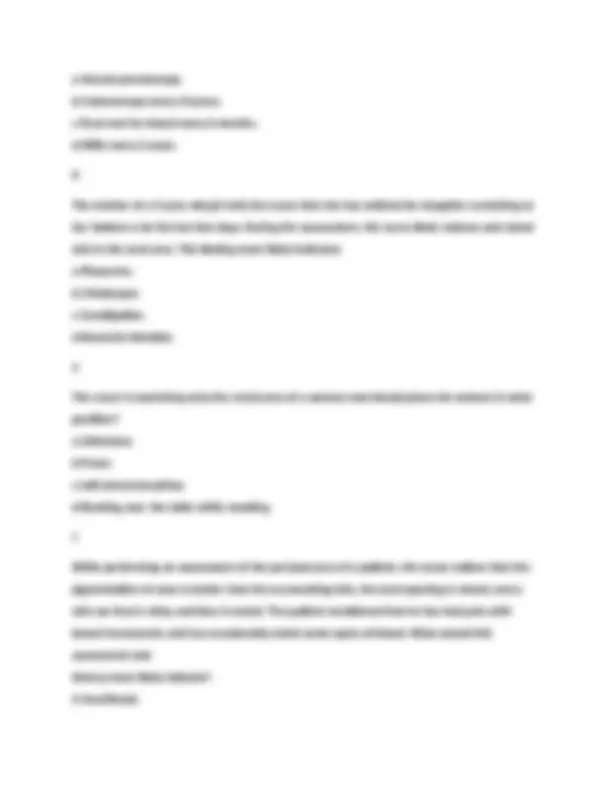
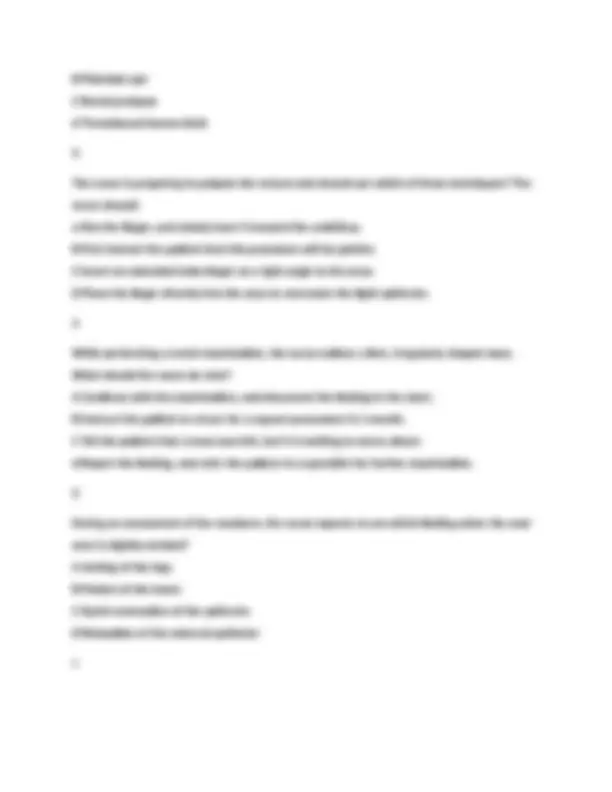
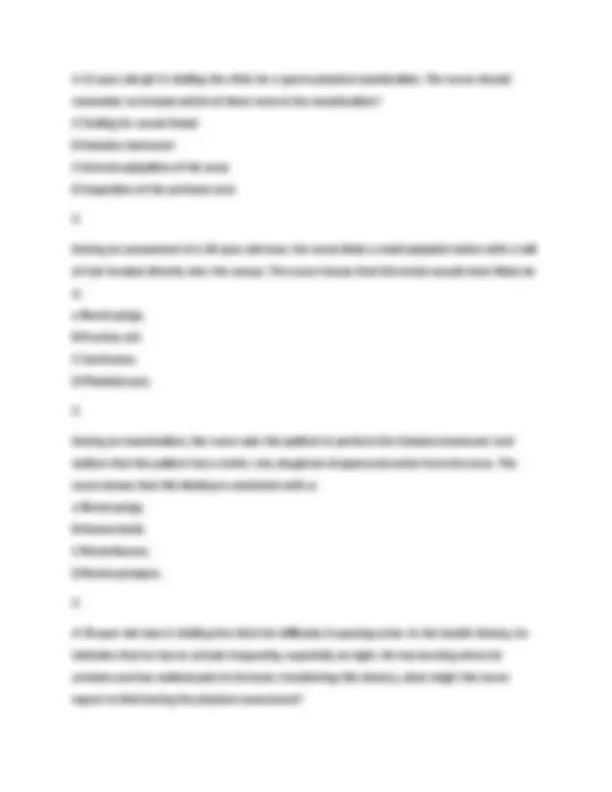
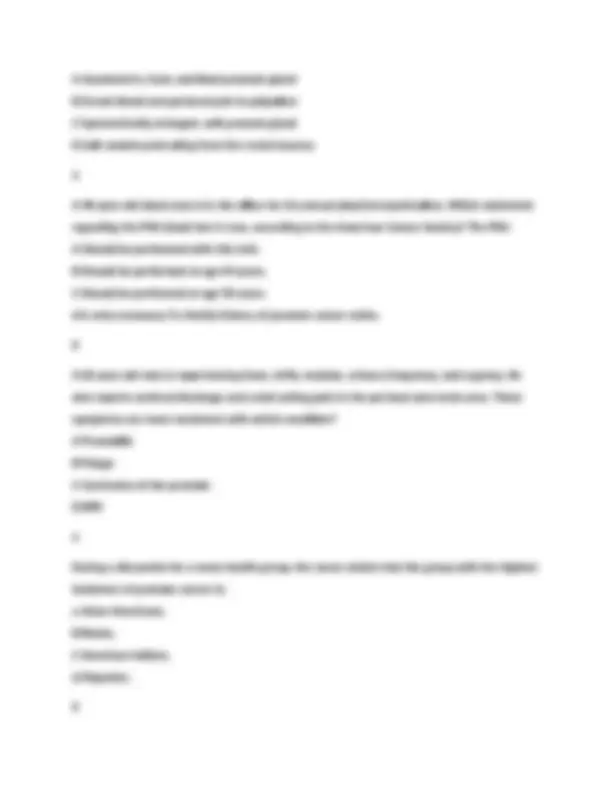
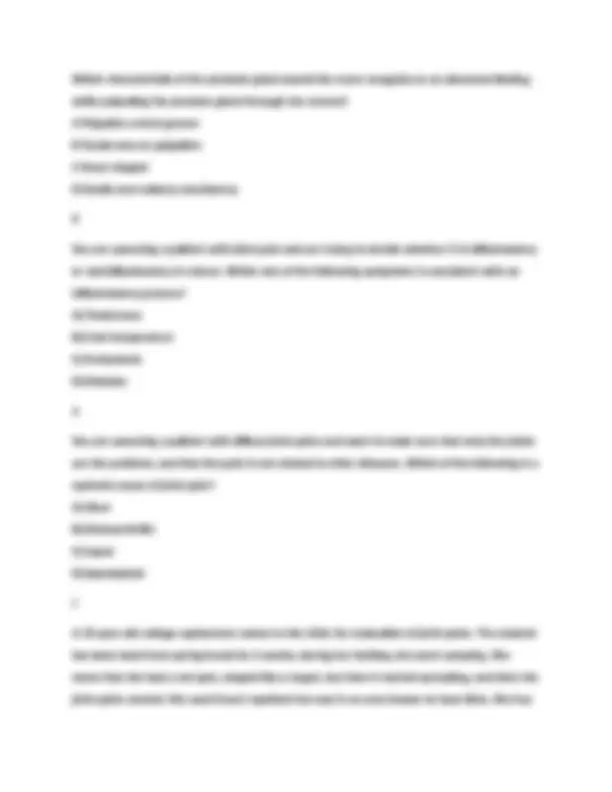
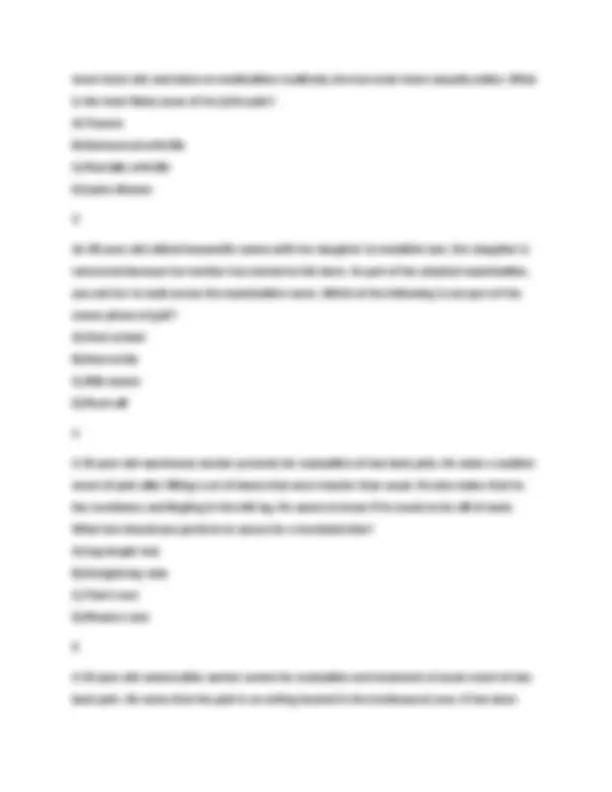
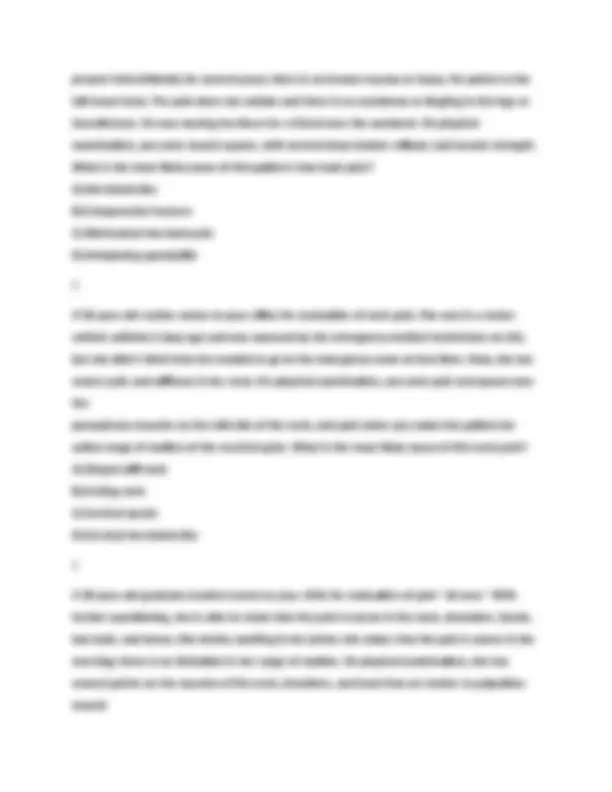
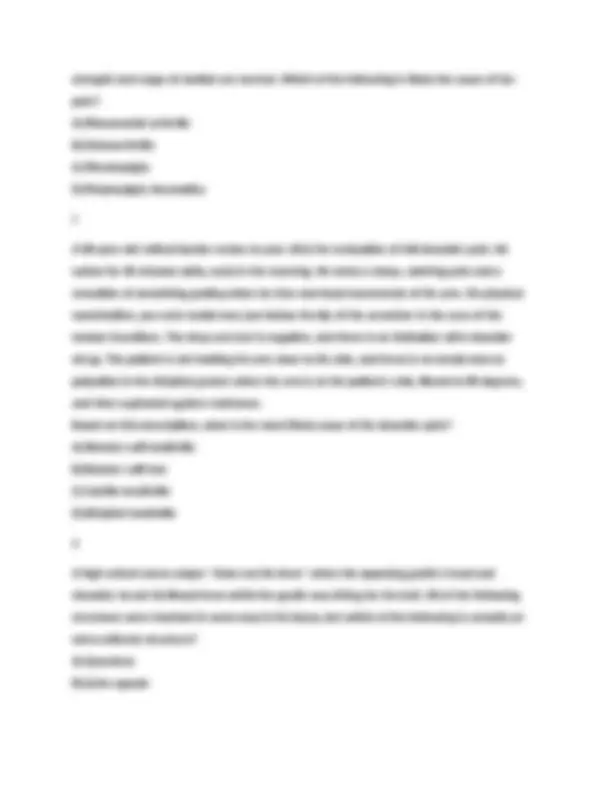
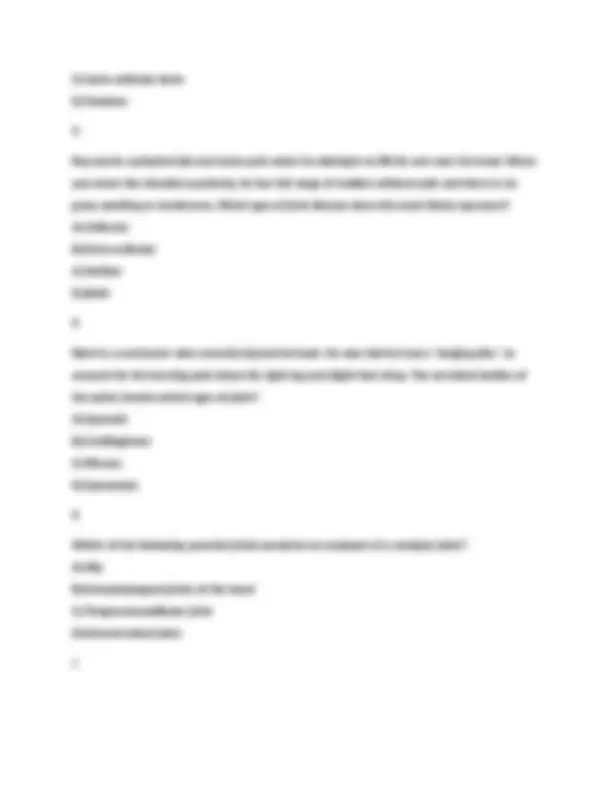
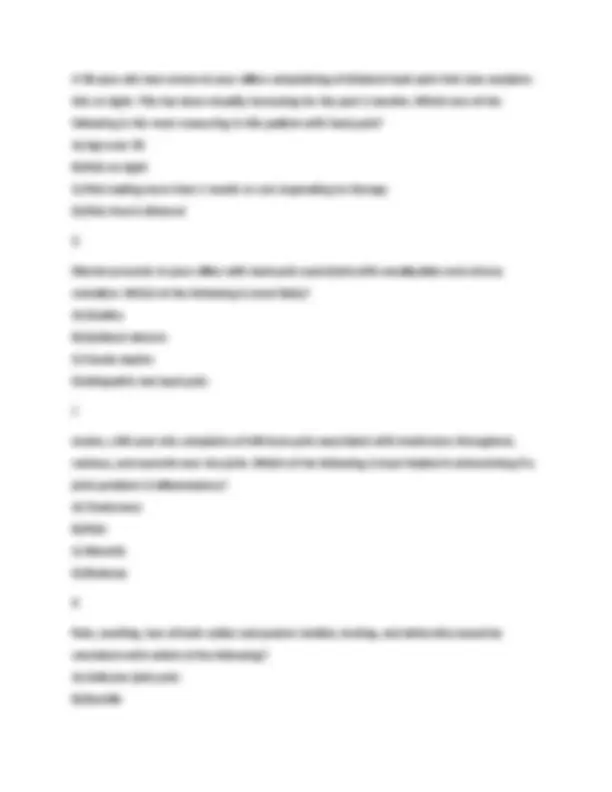
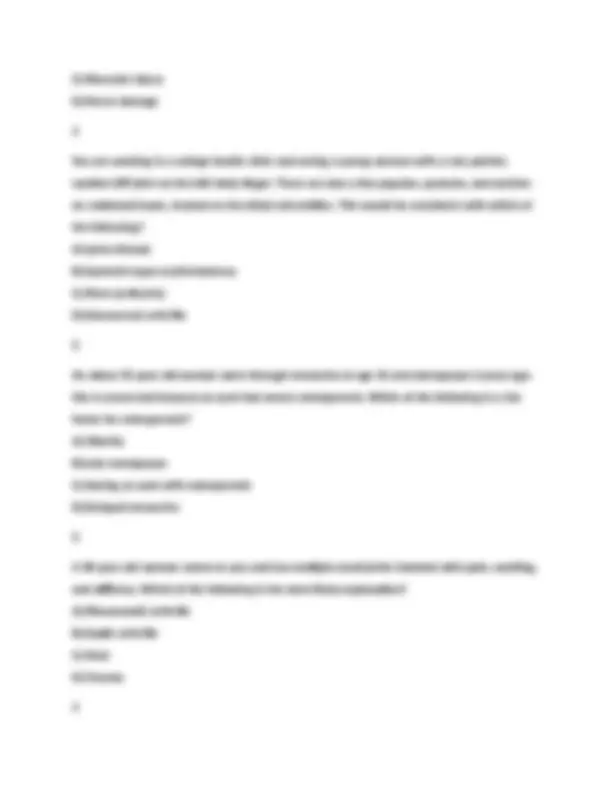
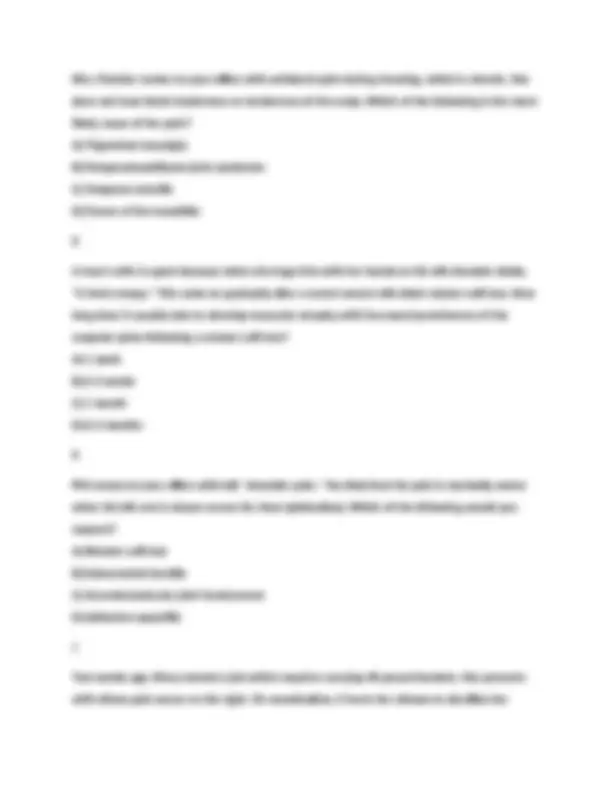
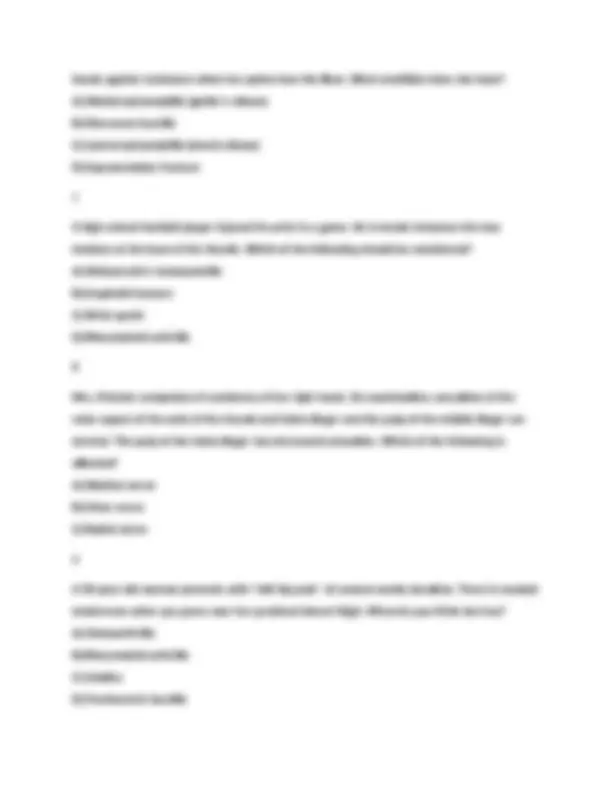
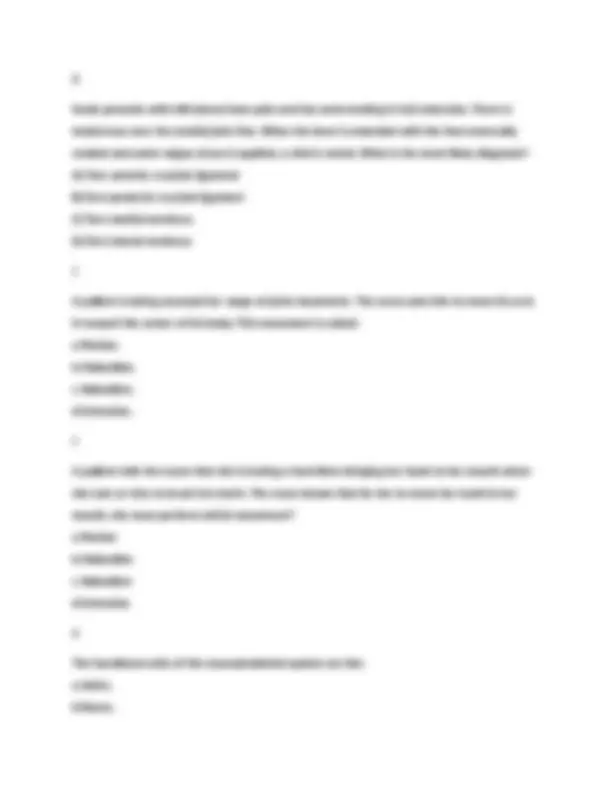
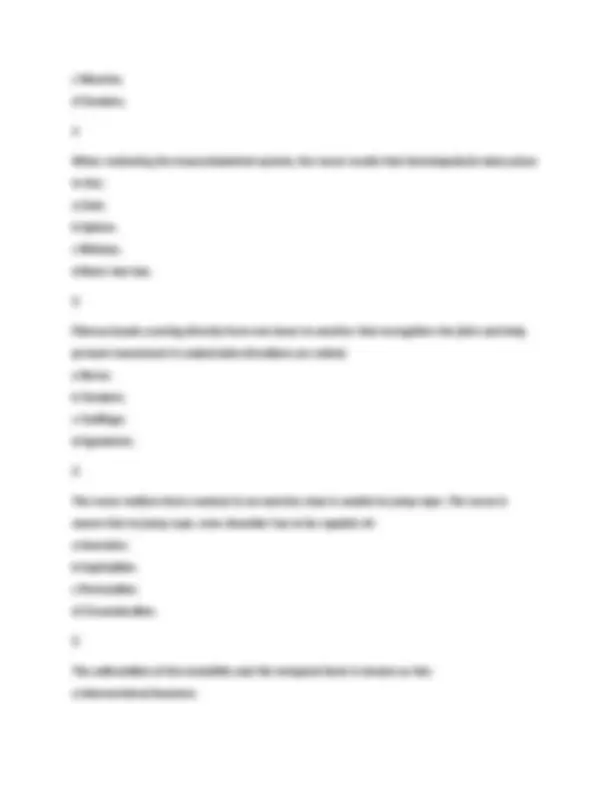
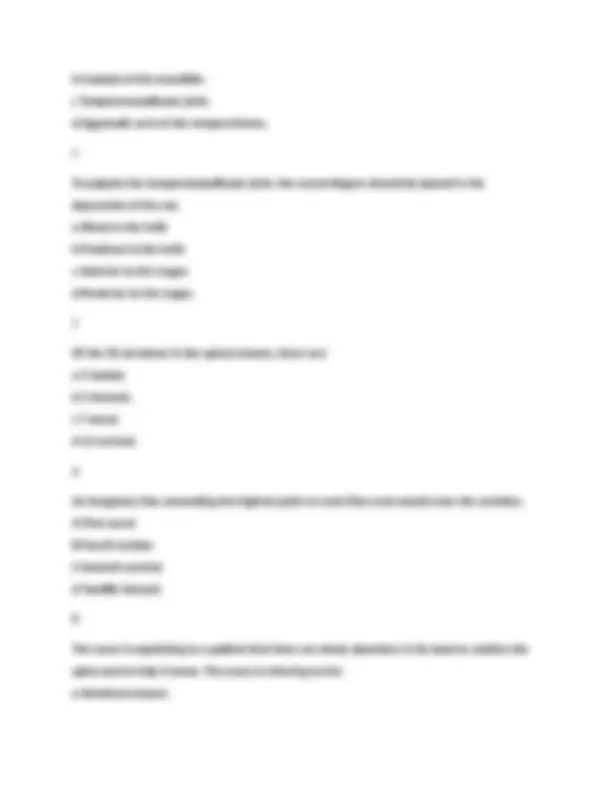
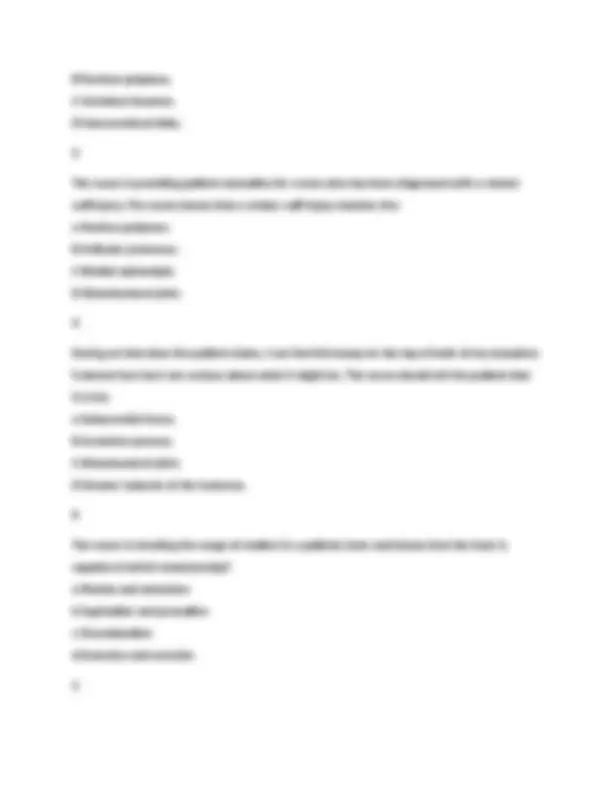
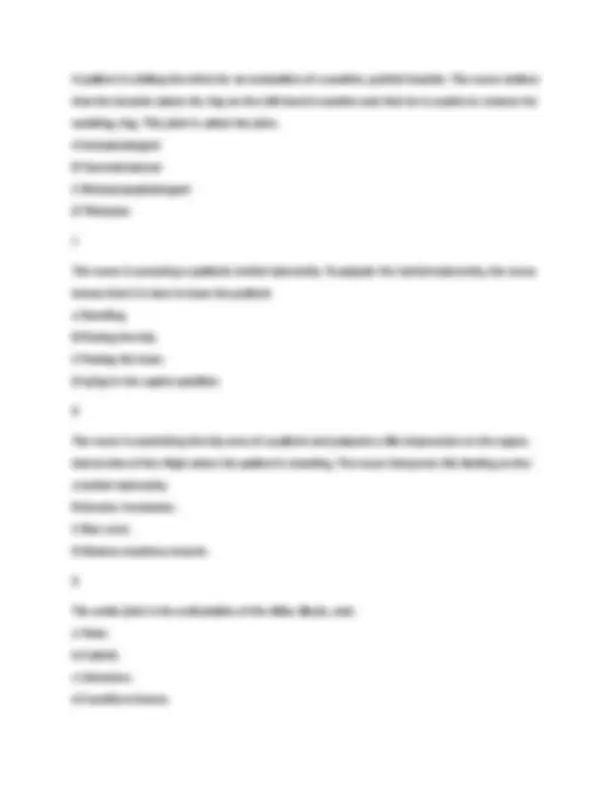
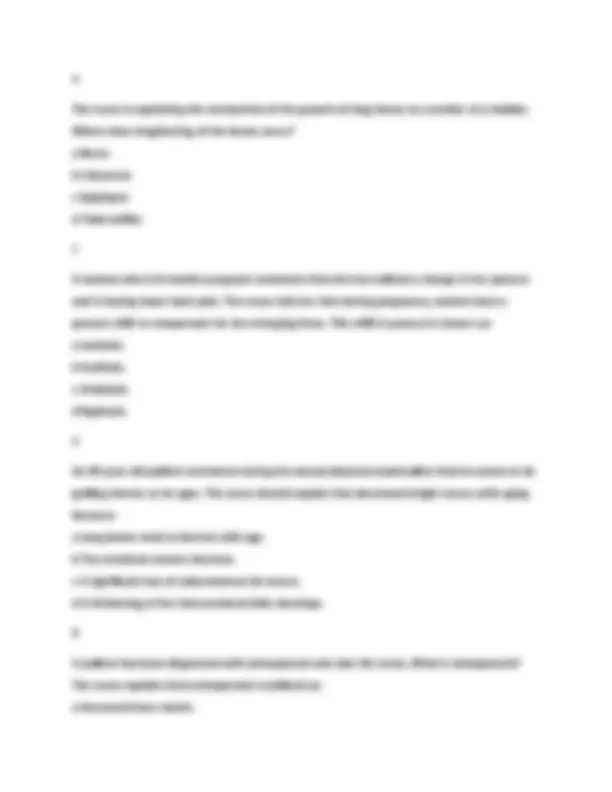
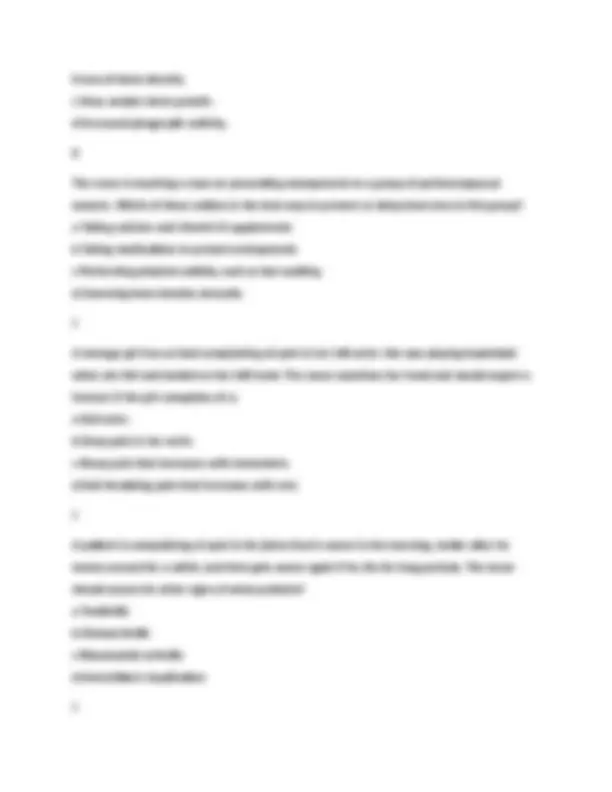
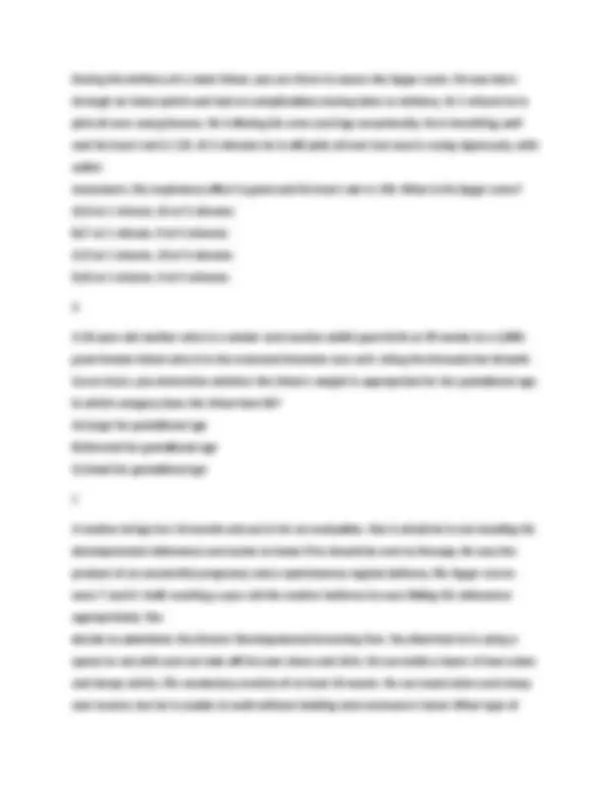
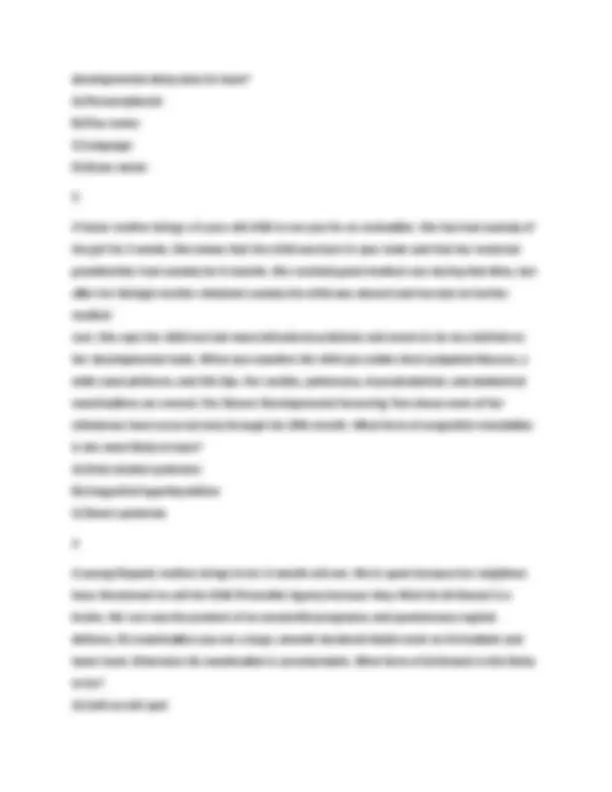
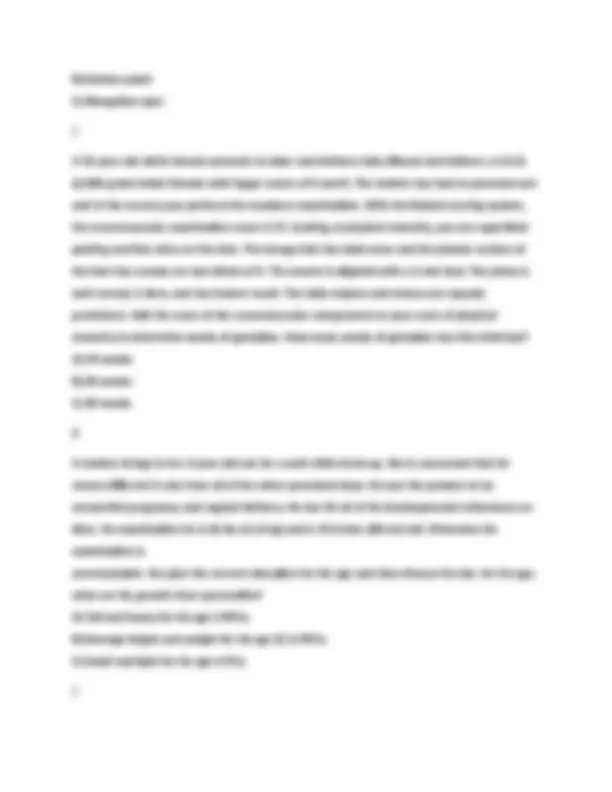
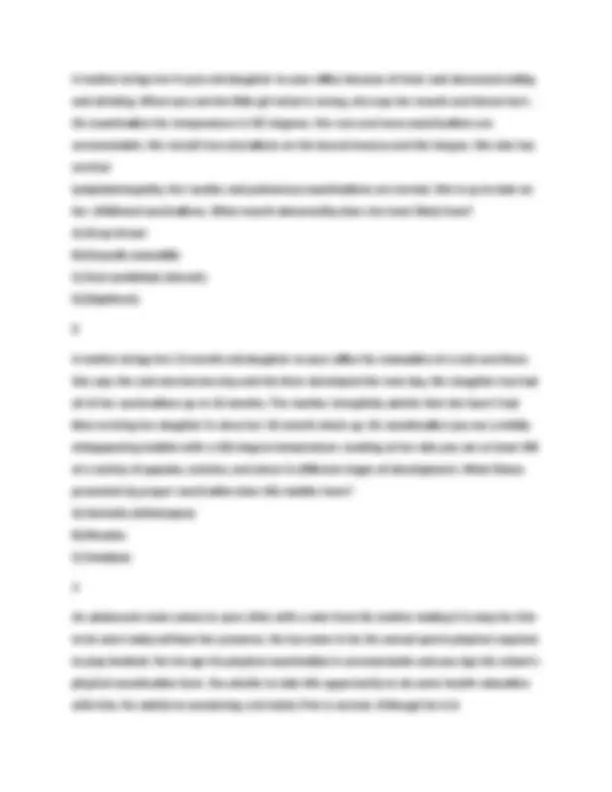
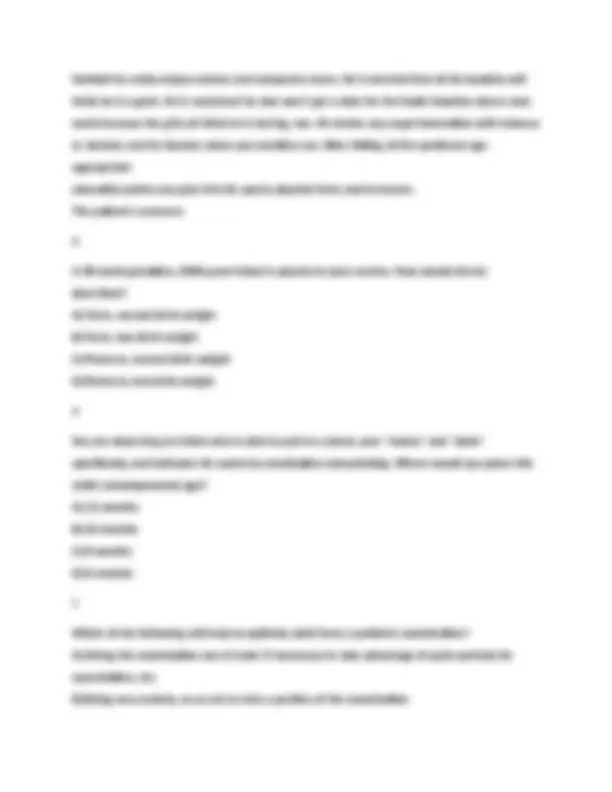
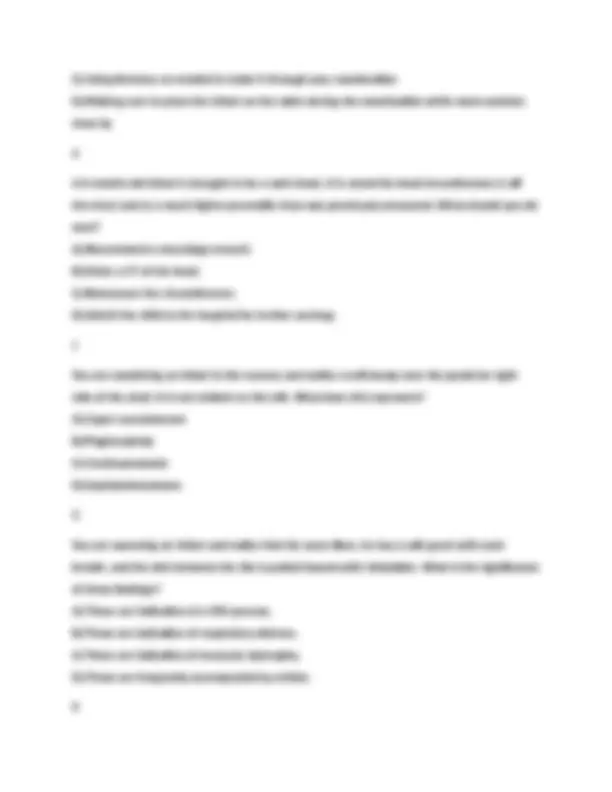
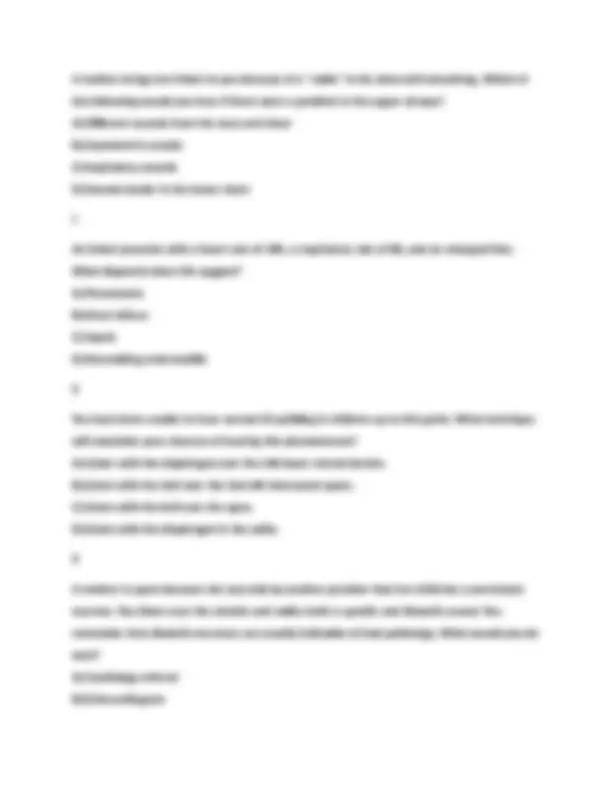
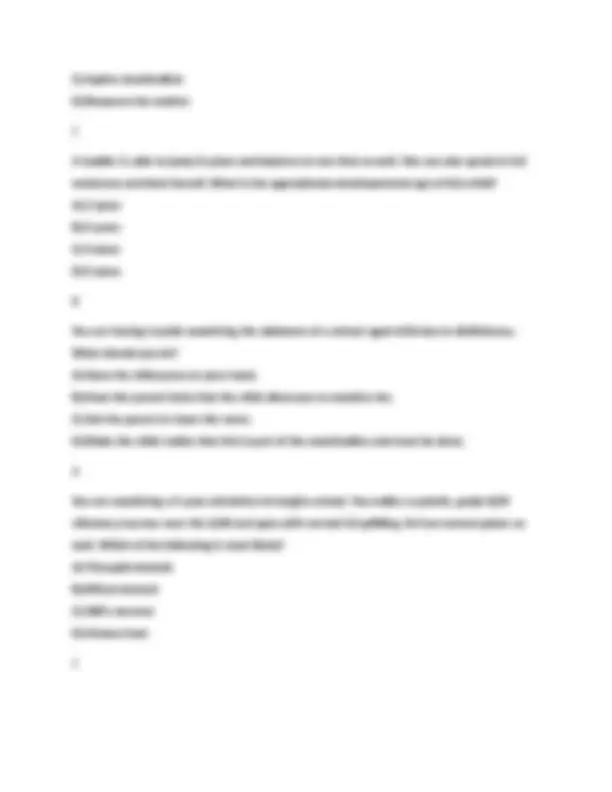
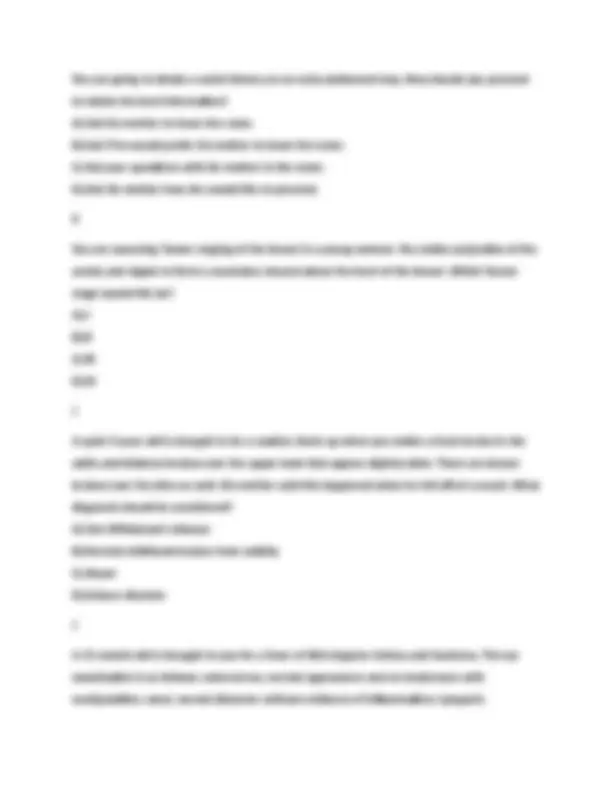
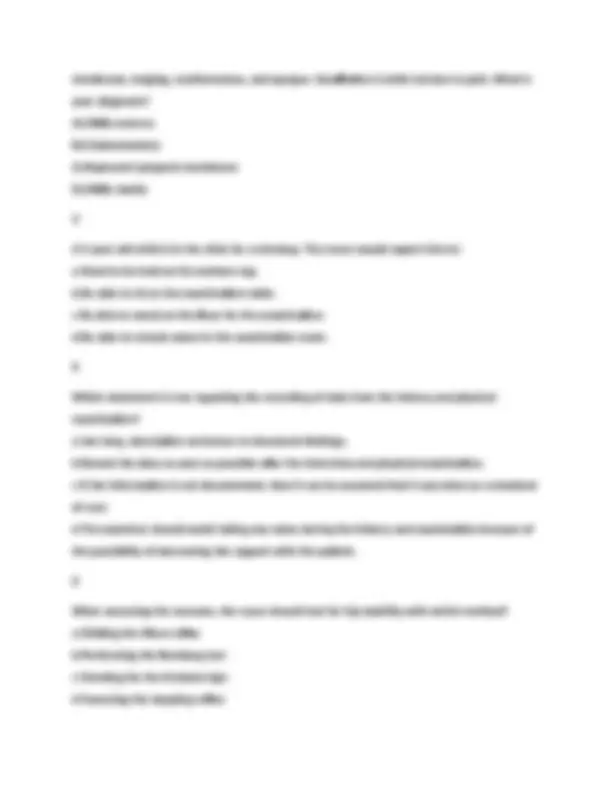
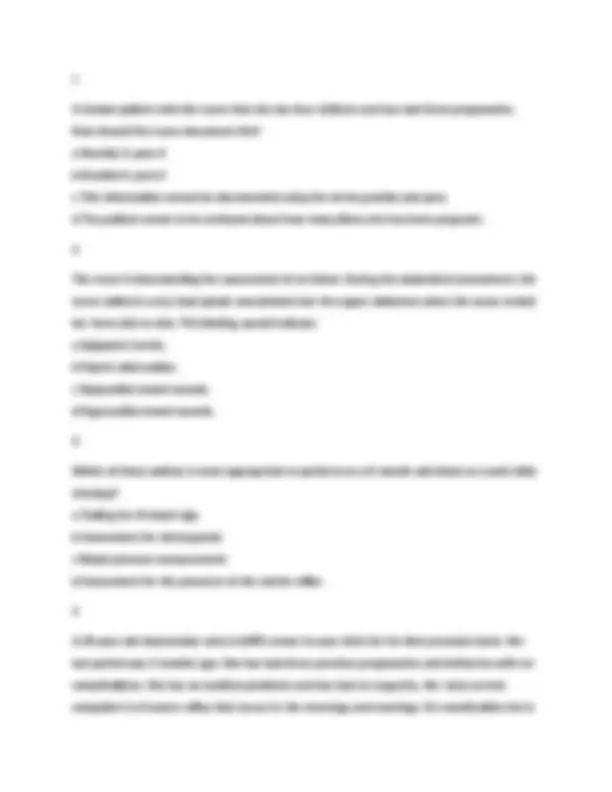
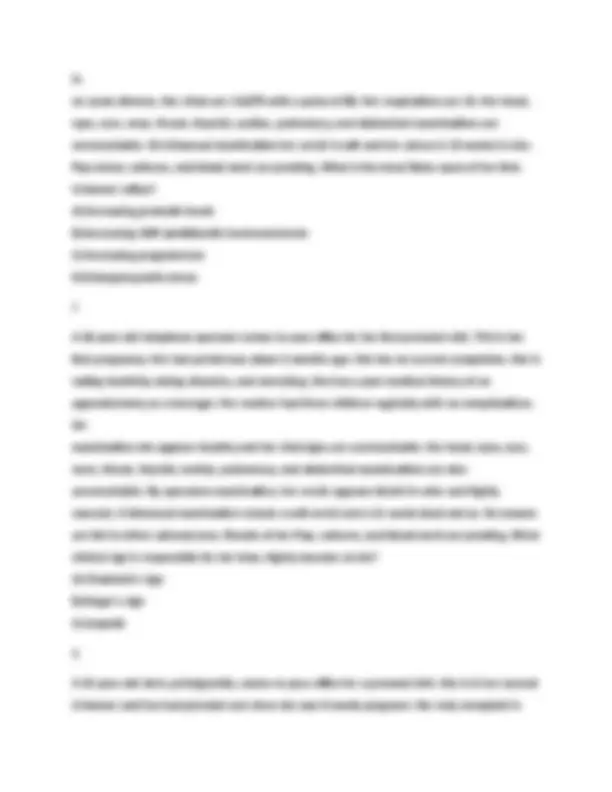
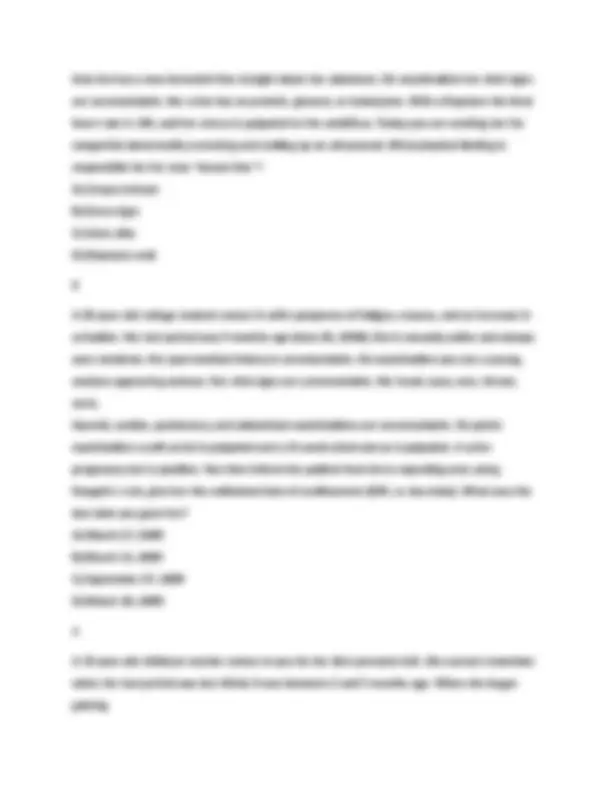
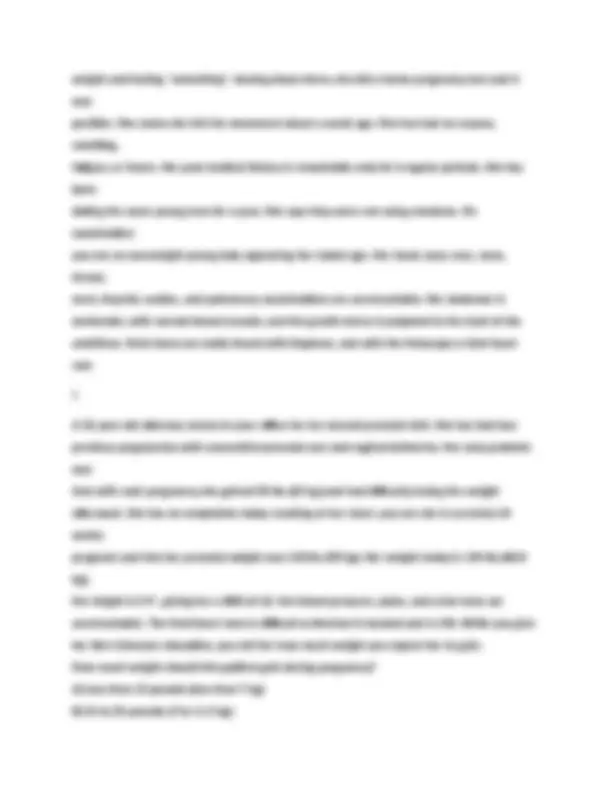


Study with the several resources on Docsity

Earn points by helping other students or get them with a premium plan


Prepare for your exams
Study with the several resources on Docsity

Earn points to download
Earn points by helping other students or get them with a premium plan
Community
Ask the community for help and clear up your study doubts
Discover the best universities in your country according to Docsity users
Free resources
Download our free guides on studying techniques, anxiety management strategies, and thesis advice from Docsity tutors
2025 NU 518 EXAM III QUESTIONS AND 100% CORRECT VERIFIED ANSWERS GRADED2025 NU 518 EXAM III QUESTIONS AND 100% CORRECT VERIFIED ANSWERS GRADED2025 NU 518 EXAM III QUESTIONS AND 100% CORRECT VERIFIED ANSWERS GRADED2025 NU 518 EXAM III QUESTIONS AND 100% CORRECT VERIFIED ANSWERS GRADED2025 NU 518 EXAM III QUESTIONS AND 100% CORRECT VERIFIED ANSWERS GRADED2025 NU 518 EXAM III QUESTIONS AND 100% CORRECT VERIFIED ANSWERS GRADED2025 NU 518 EXAM III QUESTIONS AND 100% CORRECT VERIFIED ANSWERS GRADED
Typology: Exams
1 / 130

This page cannot be seen from the preview
Don't miss anything!





























































































A 35-year-old archaeologist comes to your office (located in Phoenix, Arizona) for a regular skin check-up. She has just returned from her annual dig site in Greece. She has fair skin and reddish-blonde hair. She has a family history of melanoma. She has many freckles scattered across her skin. From this description, which of the following is not a risk factor for melanoma in this patient? A) Age B) Hair color C) Actinic lentigines D) Heavy sun exposure A You are speaking to an 8th grade class about health prevention and are preparing to discuss the ABCDEs of melanoma. Which of the following descriptions correctly defines the ABCDEs? A) A = actinic; B = basal cell; C = color changes, especially blue; D = diameter >6 mm; E =evolution B) A = asymmetry; B = irregular borders; C = color changes, especially blue; D = diameter > mm; E = evolution C) A = actinic; B = irregular borders; C = keratoses; D = dystrophic nails; E = evolution D) A = asymmetry; B = regular borders; C = color changes, especially orange; D = diameter > mm; E = evolution B You are beginning the examination of the skin on a 25-year-old teacher. You have previously elicited that she came to the office for evaluation of fatigue, weight gain, and hair loss. You strongly suspect that she has hypothyroidism. What is the expected moisture and texture of
the skin of a patient with hypothyroidism? A) Moist and smooth B) Moist and rough C) Dry and smooth D) Dry and rough D A 28-year-old patient comes to the office for evaluation of a rash. At first there was only one large patch, but then more lesions erupted suddenly on the back and torso; the lesions itch. On physical examination, you note that the pattern of eruption is like a Christmas tree and that there are a variety of erythematous papules and macules on the cleavage lines of the back. Based on this description, what is the most likely diagnosis? A) Pityriasis rosea B) Tinea versicolor C) Psoriasis D) Atopic eczema A A 19-year-old construction worker presents for evaluation of a rash. He notes that it started on his back with a multitude of spots and is also on his arms, chest, and neck. It itches a lot. He does sweat more than before because being outdoors is part of his job. On physical examination, you note dark tan patches with a reddish cast that has sharp borders and fine scales, scattered more prominently around the upper back, chest, neck, and upper arms as well as under the arms. Based on this description, what is your most likely diagnosis? A) Pityriasis rosea B) Tinea versicolor C) Psoriasis D) Atopic eczema B
An 8-year-old girl comes with her mother for evaluation of hair loss. She denies pulling or twisting her hair, and her mother has not noted this behavior at all. She does not put her hair in braids. On physical examination, you note a clearly demarcated, round patch of hair loss without visible scaling or inflammation. There are no hair shafts visible. Based on this description, what is your most likely diagnosis? A) Alopecia areata B) Trichotillomania C) Tinea capitis D) Traction alopecia A A mother brings her 11 month old to you because her mother-in-law and others have told her that her baby is jaundiced. She is eating and growing well and performing the developmental milestones she should for her age. On examination you indeed notice a yellow tone to her skin from head to toe. Her sclerae are white. To which area should your next questions be related? A) Diet B) Family history of liver diseases C) Family history of blood diseases D) Ethnicity of the child A A new mother is concerned that her child occasionally "turns blue." On further questioning, she mentions that this is at her hands and feet. She does not remember the child's lips turning blue. She is otherwise eating and growing well. What would you do now? A) Reassure her that this is normal B) Obtain an echocardiogram to check for structural heart disease and consult cardiology
C) Admit the child to the hospital for further observation D) Question the validity of her story A You are examining an unconscious patient from another region and notice Beau's lines, a transverse groove across all of her nails, about 1 cm from the proximal nail fold. What would you do next? A) Conclude this is caused by a cultural practice. B) Conclude this finding is most likely secondary to trauma. C) Look for information from family and records regarding any problems which occurred 3 months ago. D) Ask about dietary intake. C Dakota is a 14-year-old boy who just noticed a rash at his ankles. There is no history of exposure to ill people or other agents in the environment. He has a slight fever in the office. The rash consists of small, bright red marks. When they are pressed, the red color remains. What should you do? A) Prescribe a steroid cream to decrease inflammation. B) Consider admitting the patient to the hospital. C) Reassure the parents and the patient that this should resolve within a week. D) Tell him not to scratch them, and follow up in 3 days. B Mrs. Hill is a 28-year-old African-American with a history of SLE (systemic lupus erythematosus). She has noticed a raised, dark red rash on her legs. When you press on the rash, it doesn't blanch. What would you tell her regarding her rash? A) It is likely to be related to her lupus. B) It is likely to be related to an exposure to a chemical.
C) Psoriasis D) Purpura B Ms. Whiting is a 68-year-old who comes in for her usual follow-up visit. You notice a few flat red and purple lesions, about 6 centimeters in diameter, on the ulnar aspect of her forearms but nowhere else. She doesn't mention them. They are tender when you examine them. What should you do? A) Conclude that these are lesions she has had for a long time. B) Wait for her to mention them before asking further questions. C) Ask how she acquired them. D) Conduct the visit as usual for the patient. C A middle-aged man comes in because he has noticed multiple small, blood-red, raised lesions over his anterior chest and abdomen for the past several months. They are not painful and he has not noted any bleeding or bruising. He is concerned this may be consistent with a dangerous condition. What should you do? A) Reassure him that there is nothing to worry about. B) Do laboratory work to check for platelet problems. C) Obtain an extensive history regarding blood problems and bleeding disorders. D) Do a skin biopsy in the office. A The nurse educator is preparing an education module for the nursing staff on the epidermal layer of skin. Which of these statements would be included in the module? The epidermis is: a Highly vascular. B Thick and tough. C Thin and nonstratified D Replaced every 4 weeks.
The nurse educator is preparing an education module for the nursing staff on the dermis layer of skin. Which of these statements would be included in the module? The dermis: a Contains mostly fat cells. b Consists mostly of keratin. c Is replaced every 4 weeks. d Contains sensory receptors. D The nurse is examining a patient who tells the nurse, I sure sweat a lot, especially on my face and feet but it doesnt have an odor. The nurse knows that this condition could be related to: a Eccrine glands. b Apocrine glands. c Disorder of the stratum corneum. d Disorder of the stratum germinativum. A A newborn infant is in the clinic for a well-baby checkup. The nurse observes the infant for the possibility of fluid loss because of which of these factors? a Subcutaneous fat deposits are high in the newborn. b Sebaceous glands are overproductive in the newborn. c The newborns skin is more permeable than that of the adult. d The amount of vernix caseosa dramatically rises in the newborn. C The nurse is bathing an 80-year-old man and notices that his skin is wrinkled, thin, lax, and dry. This finding would be related to which factor in the older adult? a Increased vascularity of the skin b Increased numbers of sweat and sebaceous glands
A woman is leaving on a trip to Hawaii and has come in for a checkup. During the examination the nurse learns that she has diabetes and takes oral hypoglycemic agents. The patient needs to be concerned about which possible effect of her medications? a Increased possibility of bruising b Skin sensitivity as a result of exposure to salt water c Lack of availability of glucose-monitoring supplies d Importance of sunscreen and avoiding direct sunlight D A 13-year-old girl is interested in obtaining information about the cause of her acne. The nurse should share with her that acne: a Is contagious. b Has no known cause. c Is caused by increased sebum production. d Has been found to be related to poor hygiene. C A 75-year-old woman who has a history of diabetes and peripheral vascular disease has been trying to remove a corn on the bottom of her foot with a pair of scissors. The nurse will encourage her to stop trying to remove the corn with scissors because: a The woman could be at increased risk for infection and lesions because of her chronic disease. b With her diabetes, she has increased circulation to her foot, and it could cause severe bleeding. c She is 75 years old and is unable to see; consequently, she places herself at greater risk for self-injury with the scissors. d With her peripheral vascular disease, her range of motion is limited and she may not be able to reach the corn safely. A
The nurse keeps in mind that a thorough skin assessment is extremely important because the skin holds information about a persons: a Support systems. b Circulatory status. c Socioeconomic status. d Psychological wellness. B A patient comes in for a physical examination and complains of freezing to death while waiting for her examination. The nurse notes that her skin is pale and cool and attributes this finding to: a Venous pooling. b Peripheral vasodilation. c Peripheral vasoconstriction. d Decreased arterial perfusion. C A patient comes to the clinic and tells the nurse that he has been confined to his recliner chair for approximately 3 days with his feet down and he asks the nurse to evaluate his feet. During the assessment, the nurse might expect to find: a Pallor b Coolness c Distended veins d Prolonged capillary filling time C A patient is especially worried about an area of skin on her feet that has turned white. The health care provider has told her that her condition is vitiligo. The nurse explains to her that vitiligo is: a Caused by an excess of melanin pigment
A black patient is in the intensive care unit because of impending shock after an accident. The nurse expects to find what characteristics in this patients skin? a Ruddy blue. b Generalized pallor. c Ashen, gray, or dull. d Patchy areas of pallor. C An older adult woman is brought to the emergency department after being found lying on the kitchen floor for 2 days; she is extremely dehydrated. What would the nurse expect to see during the examination? a Smooth mucous membranes and lips b Dry mucous membranes and cracked lips c Pale mucous membranes d White patches on the mucous membranes B A 42-year-old woman complains that she has noticed several small, slightly raised, bright red dots on her chest. On examination, the nurse expects that the spots are probably: a Anasarca. b Scleroderma. c Senile angiomas. d Latent myeloma. C A 65-year-old man with emphysema and bronchitis has come to the clinic for a follow-up appointment. On assessment, the nurse might expect to see which finding? A Anasarca B Scleroderma
C Pedal erythema d Clubbing of the nails D A newborn infant has Down syndrome. During the skin assessment, the nurse notices a transient mottling in the trunk and extremities in response to the cool temperature in the examination room. The infants mother also notices the mottling and asks what it is. The nurse knows that this mottling is called: a Caf au lait. B Carotenemia. C Acrocyanosis. D Cutis marmorata. D A 35-year-old pregnant woman comes to the clinic for a monthly appointment. During the assessment, the nurse notices that she has a brown patch of hyperpigmentation on her face. The nurse continues the skin assessment aware that another finding may be: a Keratoses. b Xerosis. c Chloasma. d Acrochordons. C A man has come in to the clinic for a skin assessment because he is worried he might have skin cancer. During the skin assessment the nurse notices several areas of pigmentation that look greasy, dark, and stuck on his skin. Which is the best prediction? a Senile lentigines, which do not become cancerous b Actinic keratoses, which are precursors to basal cell carcinoma c Acrochordons, which are precursors to squamous cell carcinoma d Seborrheic keratoses, which do not become cancerous
A 56-year-old female comes to your clinic, complaining of her left breast looking unusual. She says that for 2 months the angle of the nipple has changed direction. She does not do selfexaminations, so she doesn't know if she has a lump. She has no history of weight loss, weight gain, fever, or night sweats. Her past medical history is significant for high blood pressure. She smokes two packs of cigarettes a day and has three to four drinks per weekend night. Her paternal aunt died of breast cancer in her forties. Her mother is healthy but her father died of prostate cancer. On examination you find a middle-aged woman appearing older than her stated age. Inspection of her left breast reveals a flattened nipple deviating toward the lateral side. On palpation the nipple feels thickened. Lateral to the areola you palpate a nontender 4-cm mass. The axilla contains several fixed nodes. The right breast and axilla examinat A A 19-year-old female comes to your office, complaining of a clear discharge from her right breast for 2 months. She states that she noticed it when she and her boyfriend were "messing around" and he squeezed her nipple. She continues to have this discharge anytime she squeezes that nipple. She denies any trauma to her breasts. Her past medical history is unremarkable. She denies any pregnancies. Both of her parents are healthy. She denies using tobacco or illegal drugs and drinks three to four beers a week. On examination her breasts are symmetric with no skin changes. You are able to express clear discharge from her right nipple. You feel no discrete masses and her axillae are normal. The remainder of her heart, lung, abdominal, and pelvic examinations are unremarkable. A urine pregnancy test is negative. What cause of nipple discharge is the most likely in her circumstance? A) Benign breast abnormality B) Breast ca A
A 23-year-old computer programmer comes to your office for an annual examination. She has recently become sexually active and wants to be placed on birth control. Her only complaint is that the skin in her armpits has become darker. She states it looks like dirt, and she scrubs her skin nightly with soap and water but the color stays. Her past medical symptoms consist of acne and mild obesity. Her periods have been irregular for 3 years. Her mother has type 2 diabetes and her father has high blood pressure. The patient denies using tobacco but has four to five drinks on Friday and Saturday nights. She denies any illegal drug use. On examination you see a mildly obese female who is breathing comfortably. Her vital signs are unremarkable. Looking under her axilla, you see dark, velvet-like skin. Her annual examination is otherwise unremarkable. What disorder of the breast or axilla is she most likely to have? A) Peau d B A 43-year-old store clerk comes to your office upset because she has found an enlarged lymph node under her left arm. She states she found it yesterday when she was feeling pain under her arm during movement. She states the lymph node is about an inch long and is very painful. She checks her breasts monthly and gets a yearly mammogram (her last was 2 months ago), and until now everything has been normal. She states she is so upset because her mother died in her 50s of breast cancer. The patient does not smoke, drink, or use illegal drugs. Her father is in good health. On examination you see a tense female appearing her stated age. On visual inspection of her left axilla you see a tense red area. There is no scarring around the axilla. Palpating this area, you feel a 2-cm tender, movable lymph node underlying hot skin. Other shotty nodes are also in the area. Visualization of both breasts is normal. Palpation of her r B A 63-year-old nurse comes to your office, upset because she has found an enlarged lymph node under her right arm. She states she found it last week while taking a shower. She isn't
BRCA1 gene is 50%. She is interested in knowing what her risk of developing breast cancer would be if she were positive for the gene. She denies any lumps in her breasts and has had normal mammograms. She has had no weight loss, fever, or night sweats. Her mother is healthy and her father has prostate cancer. Two of her paternal aunts died of breast cancer. She is married. She denies using tobacco or illegal drugs and rarely drinks alcohol. Her breast and axilla examinations are unremarkable. At her age, what is her risk of getting breast cancer if she has the BRCA1 gene? A) 10% B) 50% C) 80% B A 14-year-old junior high school student is brought in by his mother and father because he seems to be developing breasts. The mother is upset because she read on the Internet that smoking marijuana leads to breast enlargement in males. The young man adamantly denies using any tobacco, alcohol, or drugs. He has recently noticed changes in his penis, testicles, and pubic hair pattern. Otherwise, his past medical history is unremarkable. His parents are both in good health. He has two older brothers who never had this problem. On examination you see a mildly overweight teenager with enlarged breast tissue that is slightly tender on both sides. Otherwise his examination is normal. He is agreeable to taking a drug test. What is the most likely cause of his gynecomastia? A) Breast cancer B) Imbalance of hormones of puberty C) Drug use B A patient is concerned about a dark skin lesion on her anterolateral abdomen. It has not changed, and there is no discharge or bleeding. On examination there is a medium brown circular lesion on the anterolateral wall of the abdomen. It is soft, has regular borders, is evenly pigmented, and is about 7 mm in diameter. What is this lesion?
A) Melanoma B) Dysplastic nevus C) Supernumerary nipple D) Dermatofibroma C A 30-year-old man notices a firm, 2-cm mass under his areola. He has no other symptoms and no diagnosis of breast cancer in his first-degree relatives. What is the most likely diagnosis? A) Breast tissue B) Fibrocystic disease C) Breast cancer D) Lymph node A Which of the following lymph node groups is most commonly involved in breast cancer? A) Lateral B) Subscapular C) Pectoral D) Central D When should a woman conduct breast self-examination with respect to her menses? A) Five to seven days following her menses B) Midcycle C) Immediately prior to menses D) During her menses A Mrs. Patton, a 48-year-old woman, comes to your office with a complaint of a breast mass. Without any other information, what is the risk of this mass being cancerous?